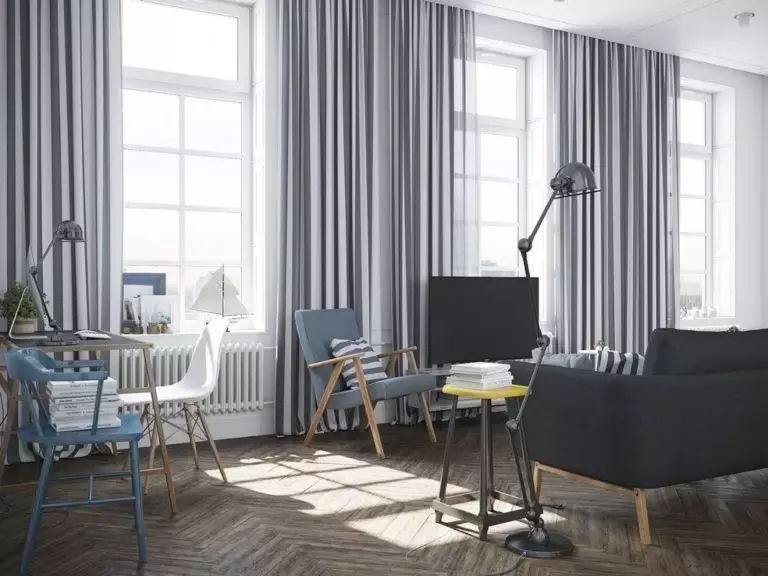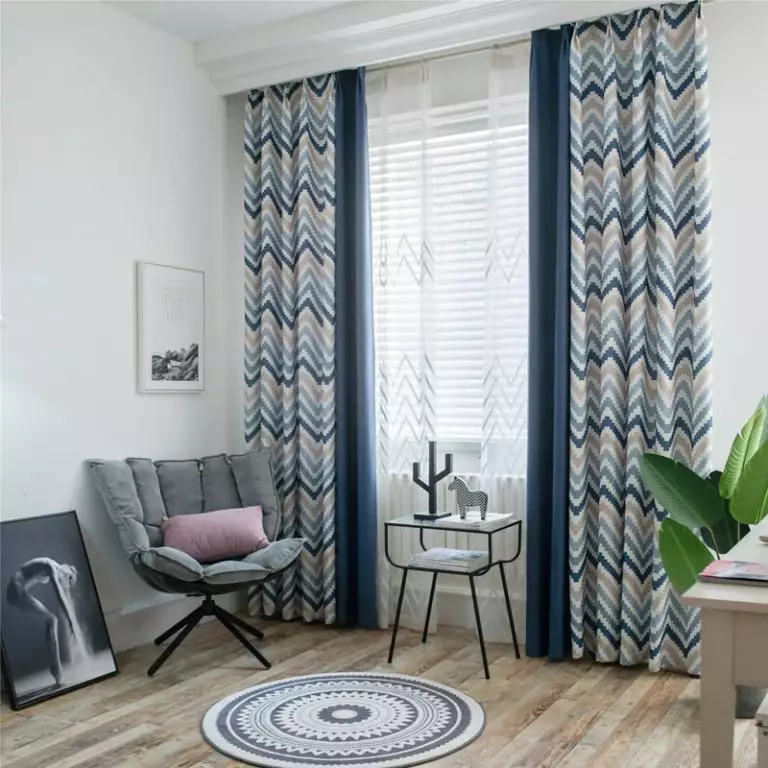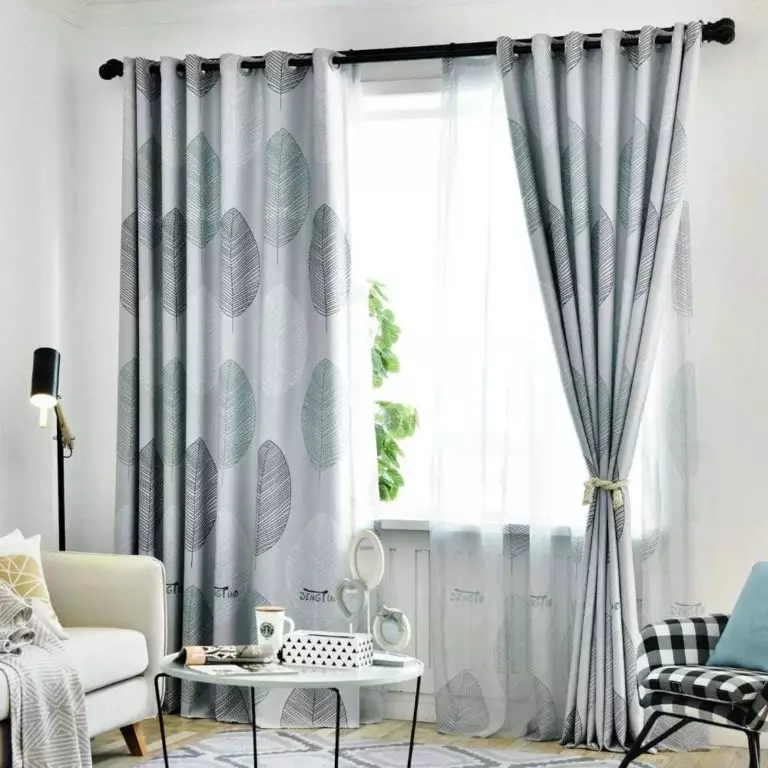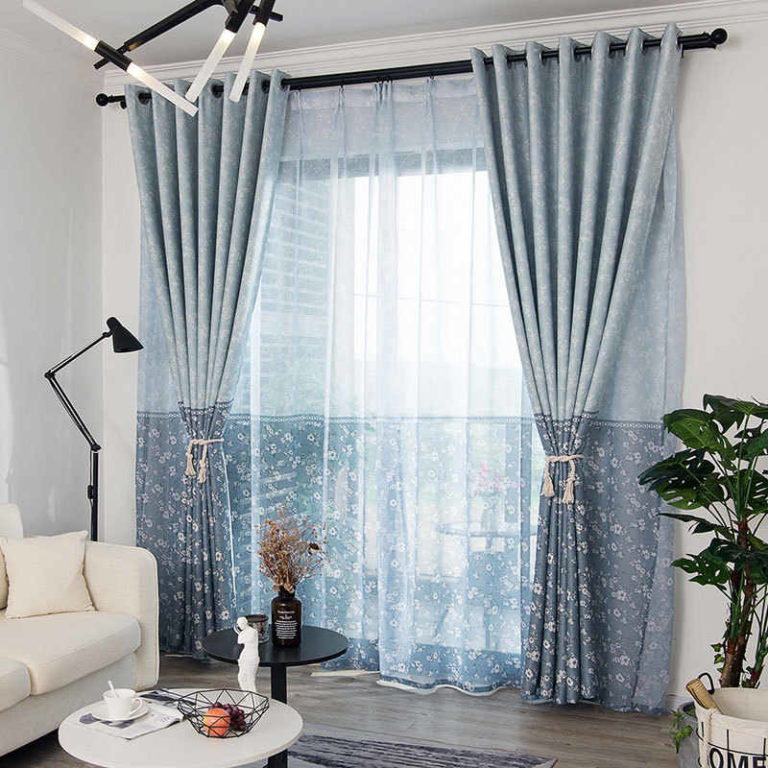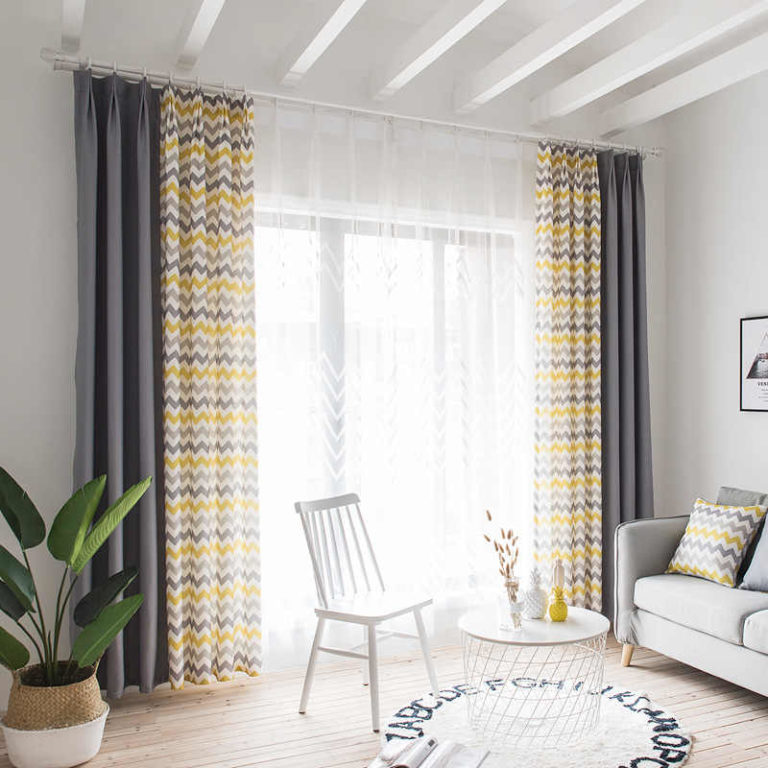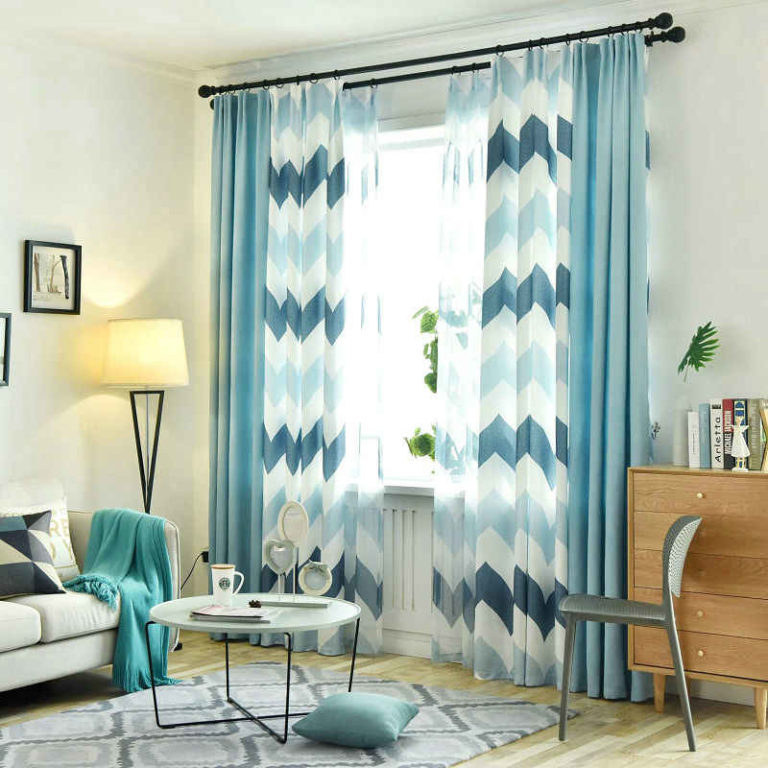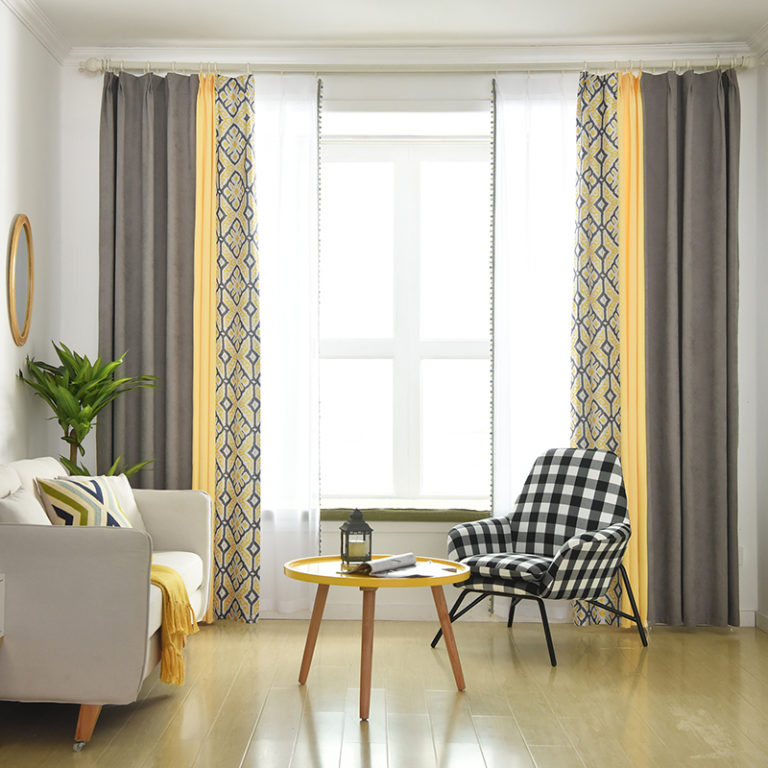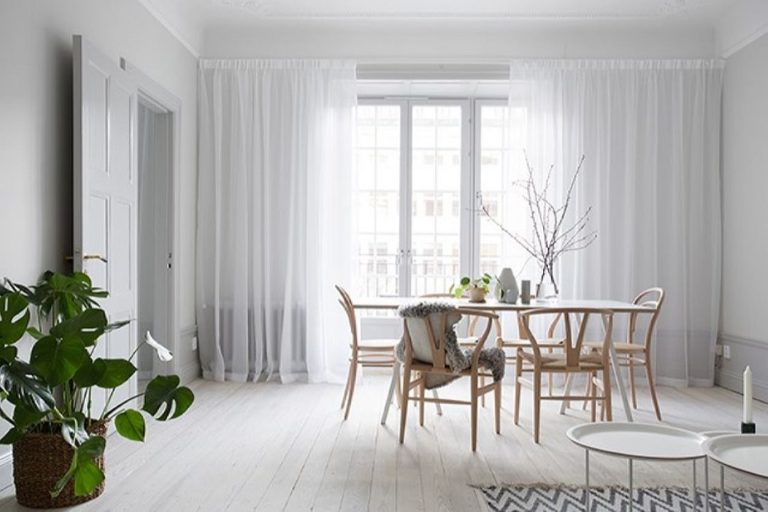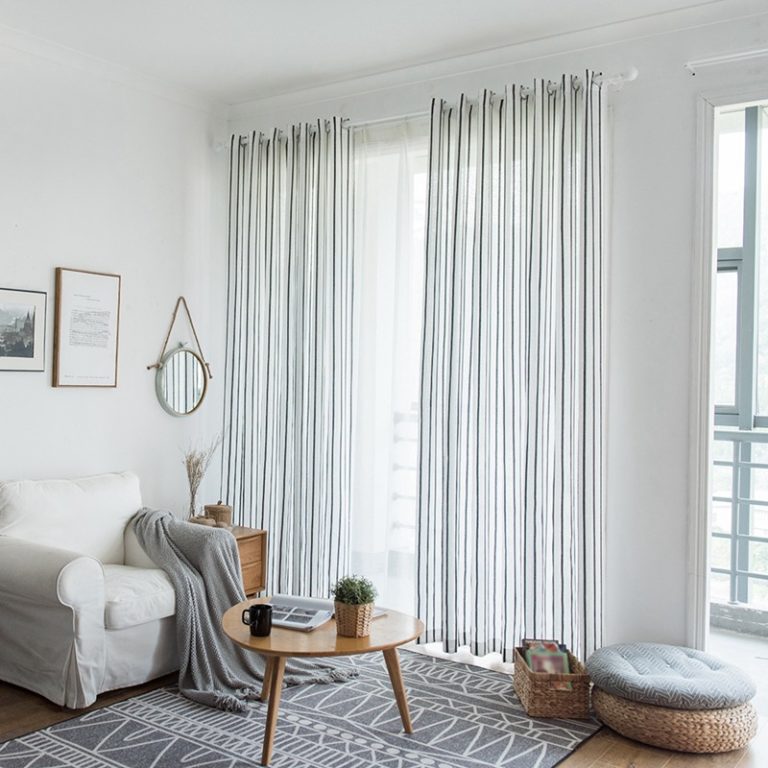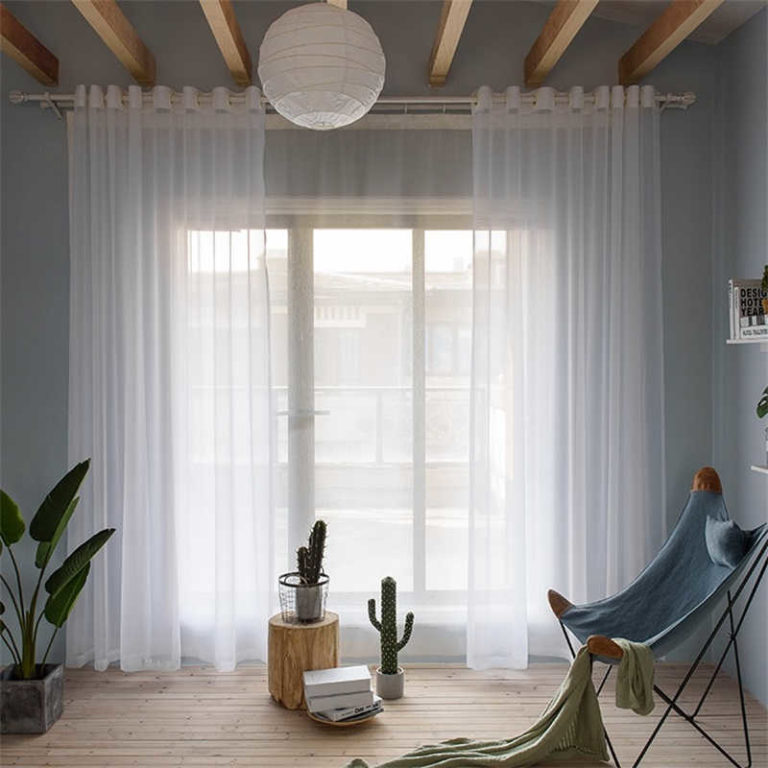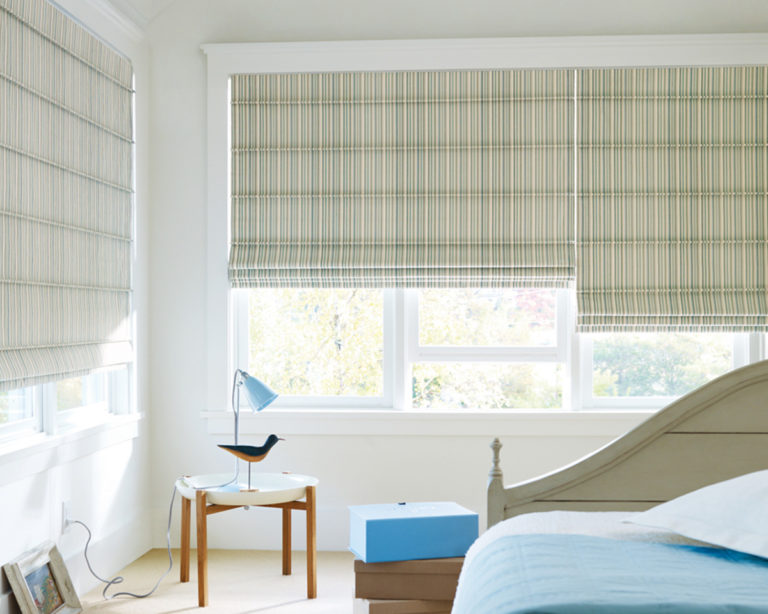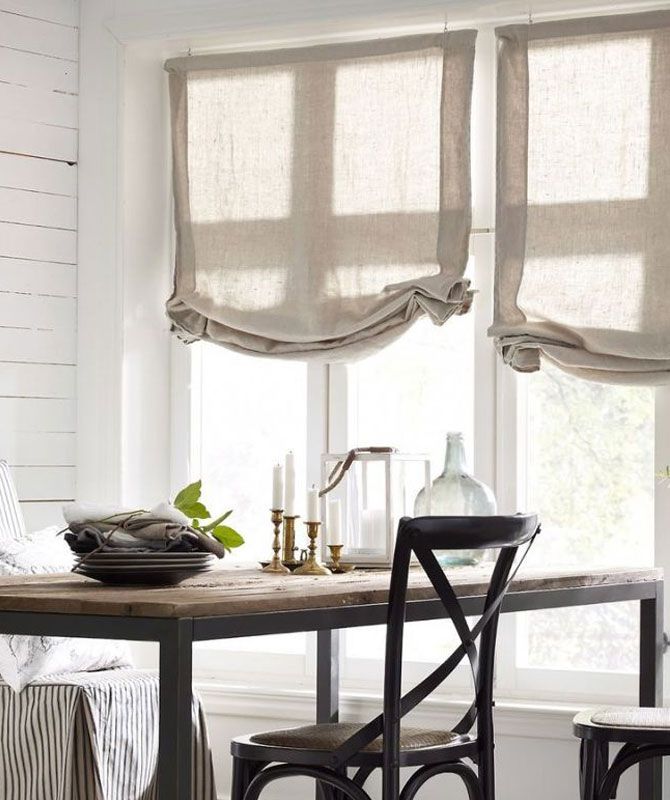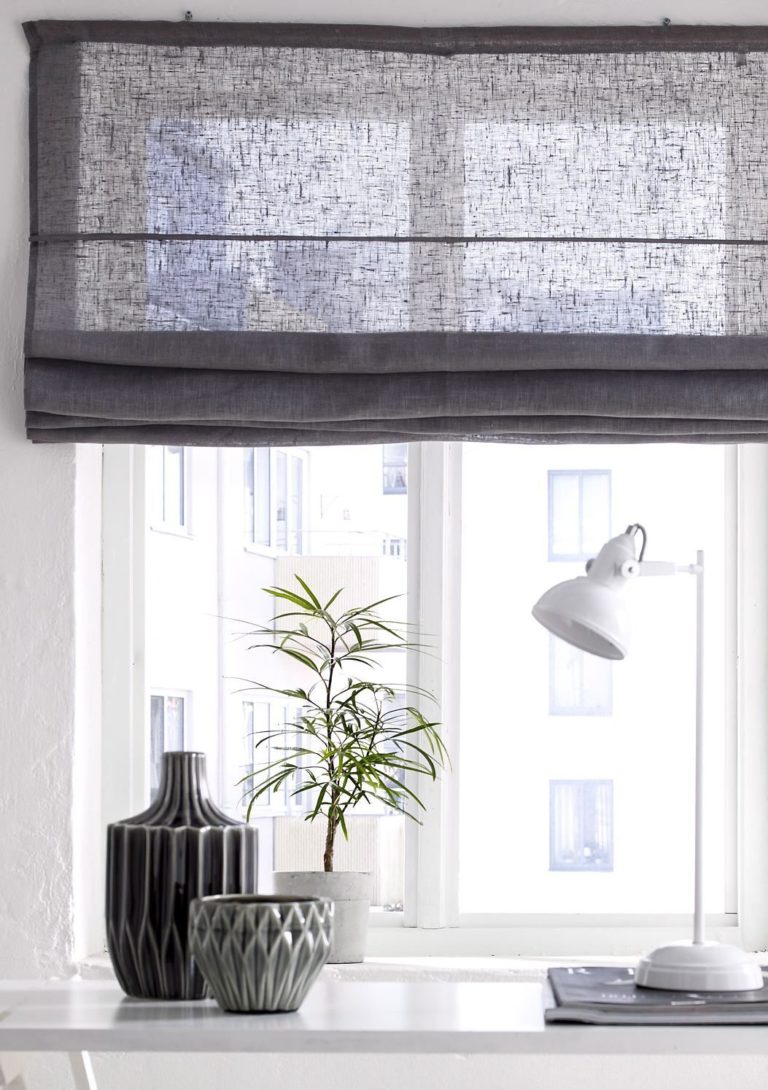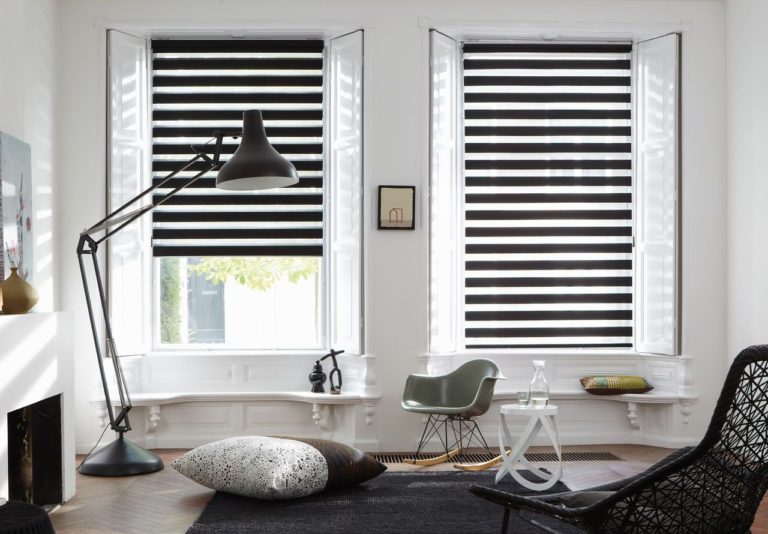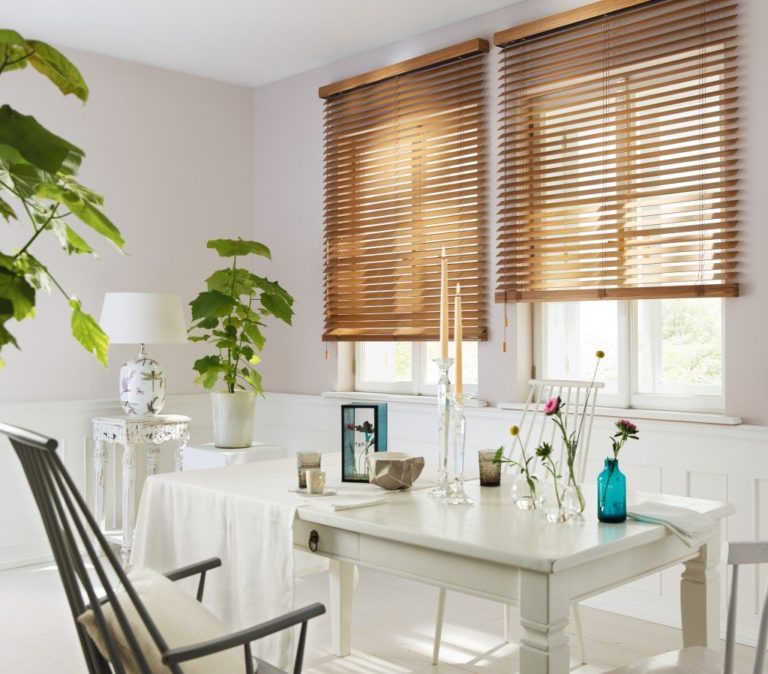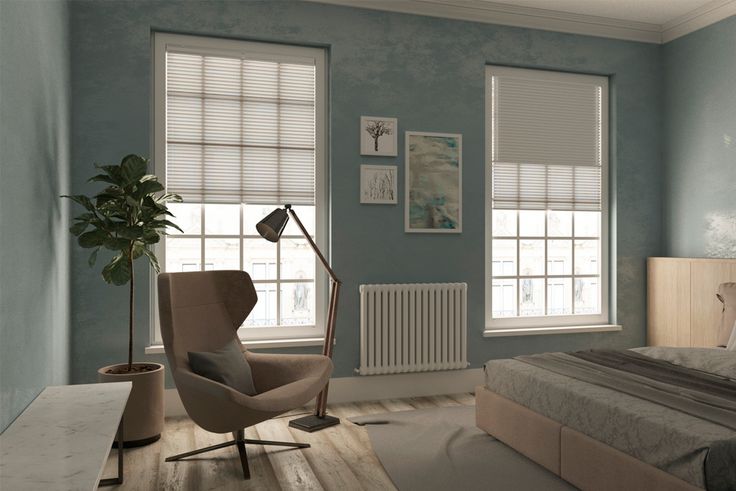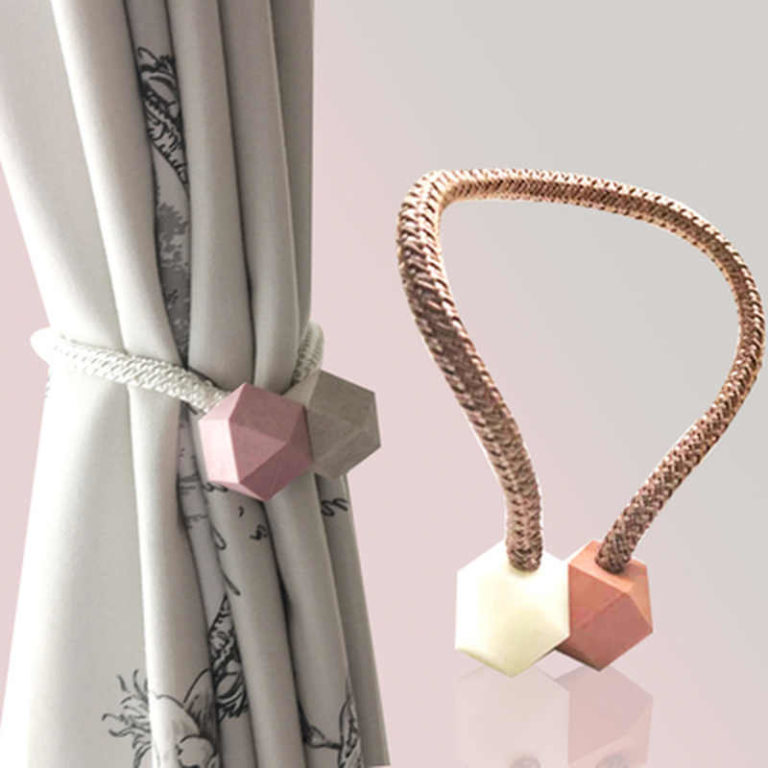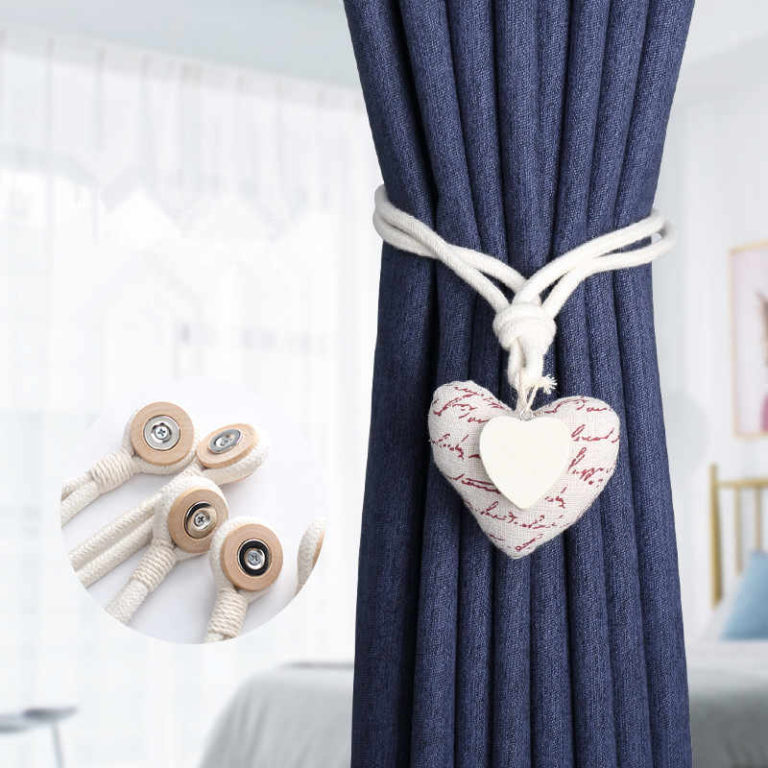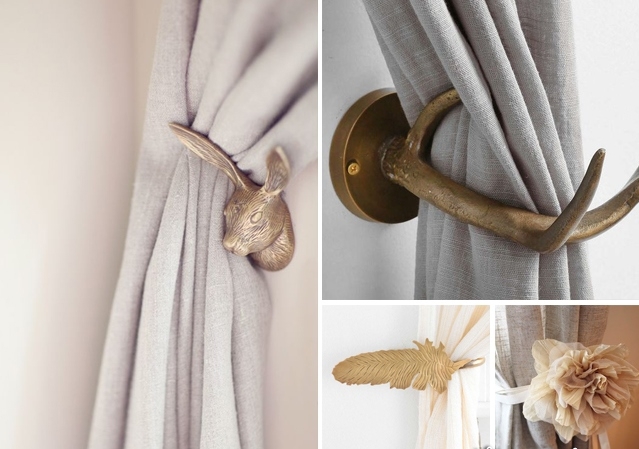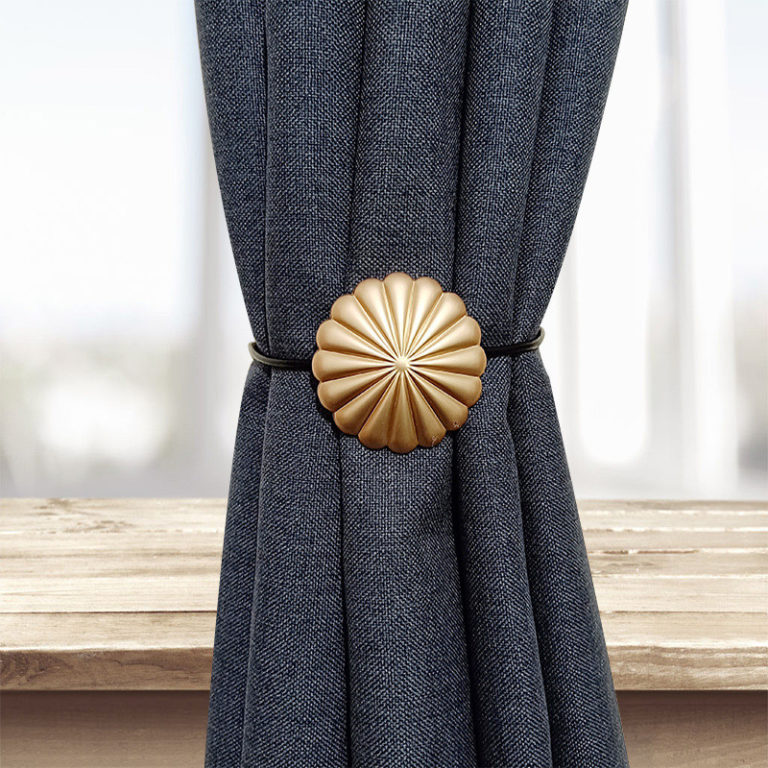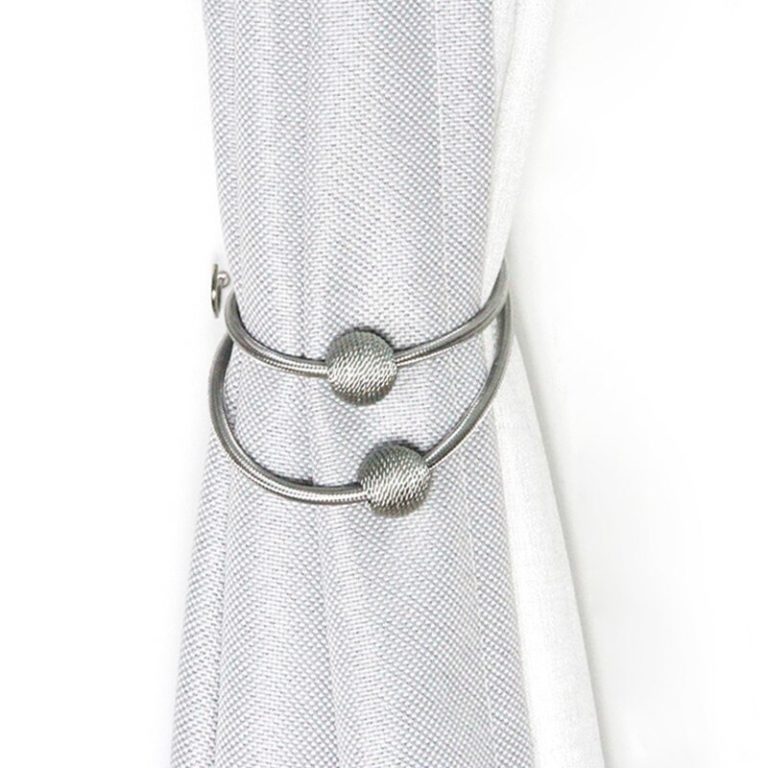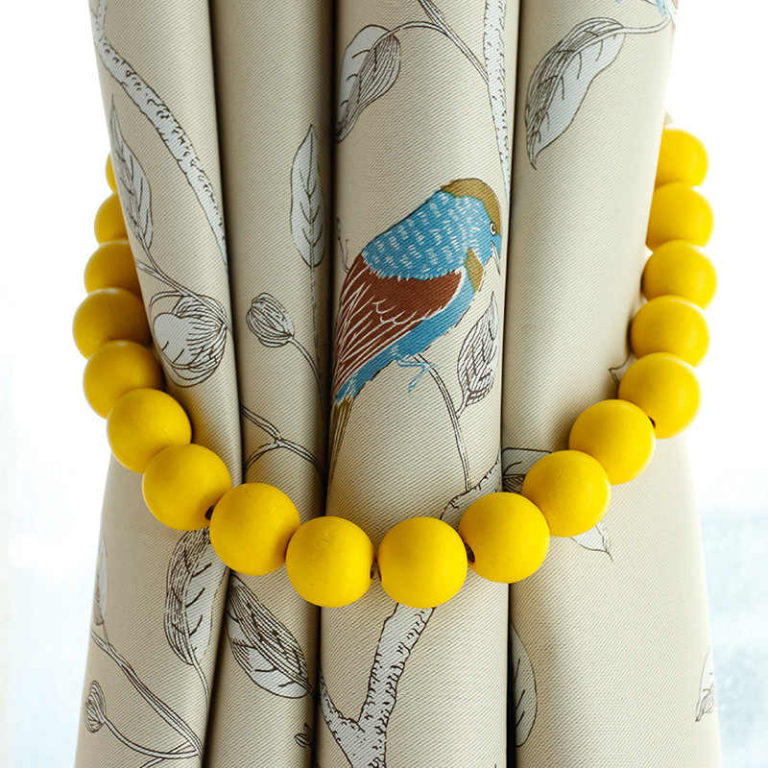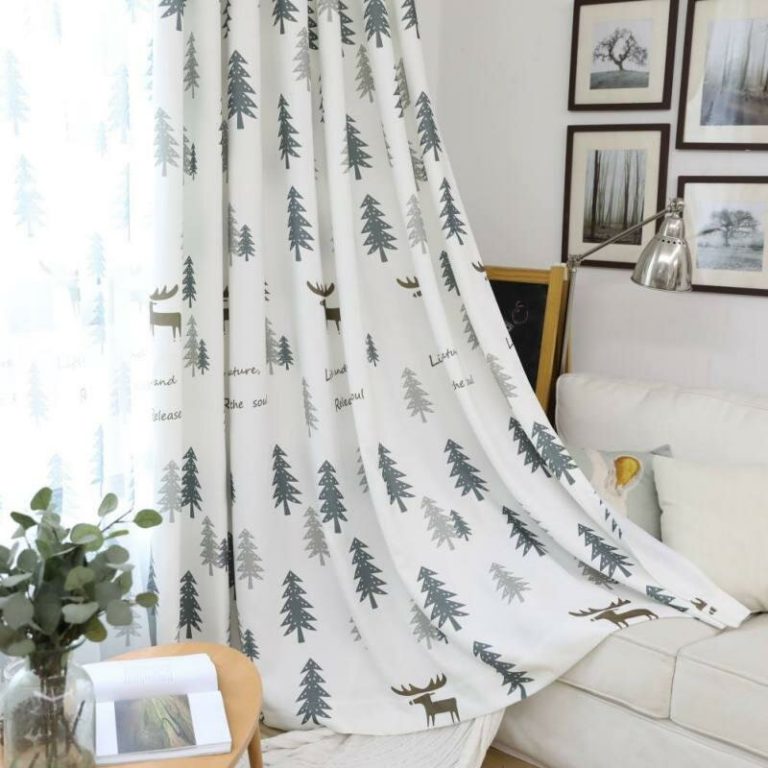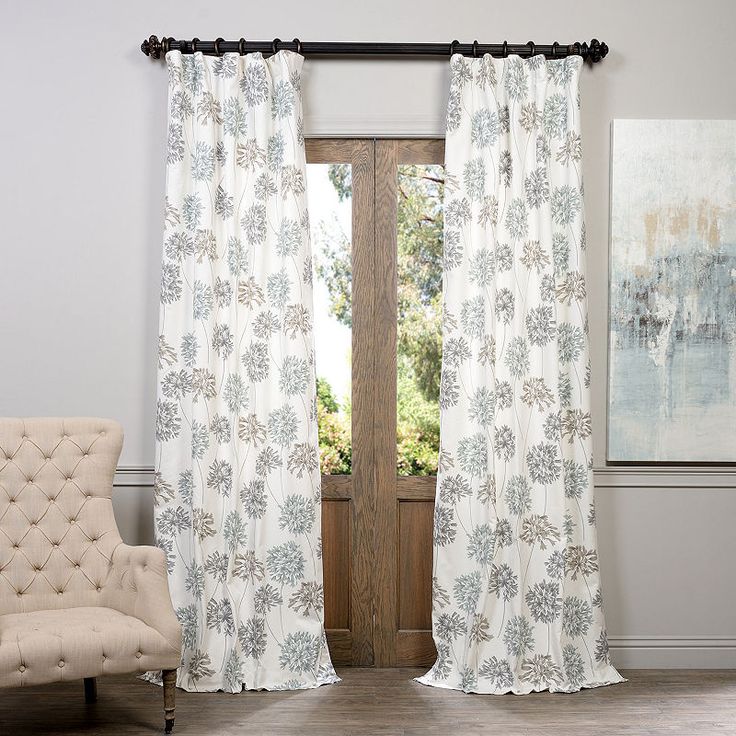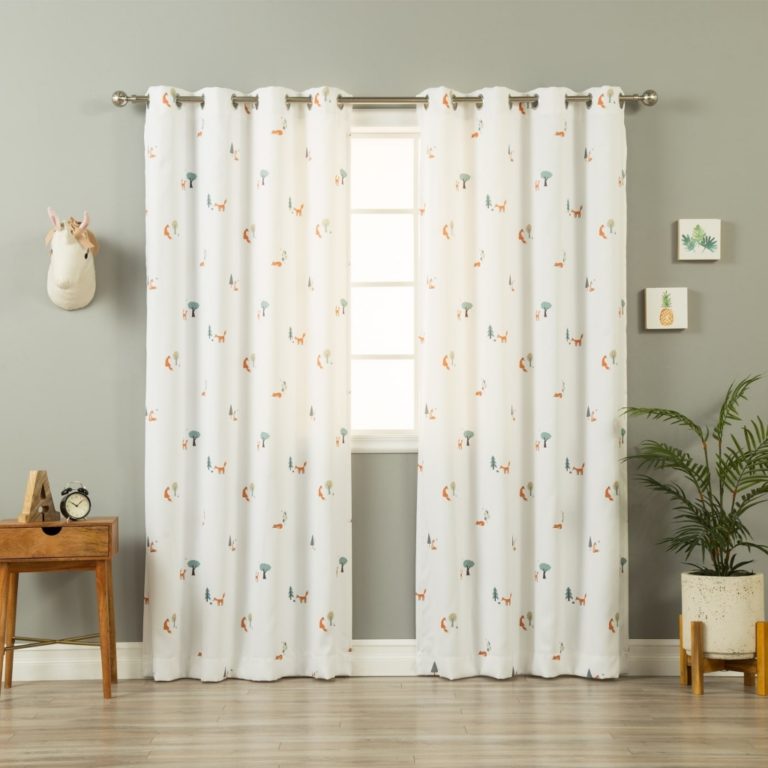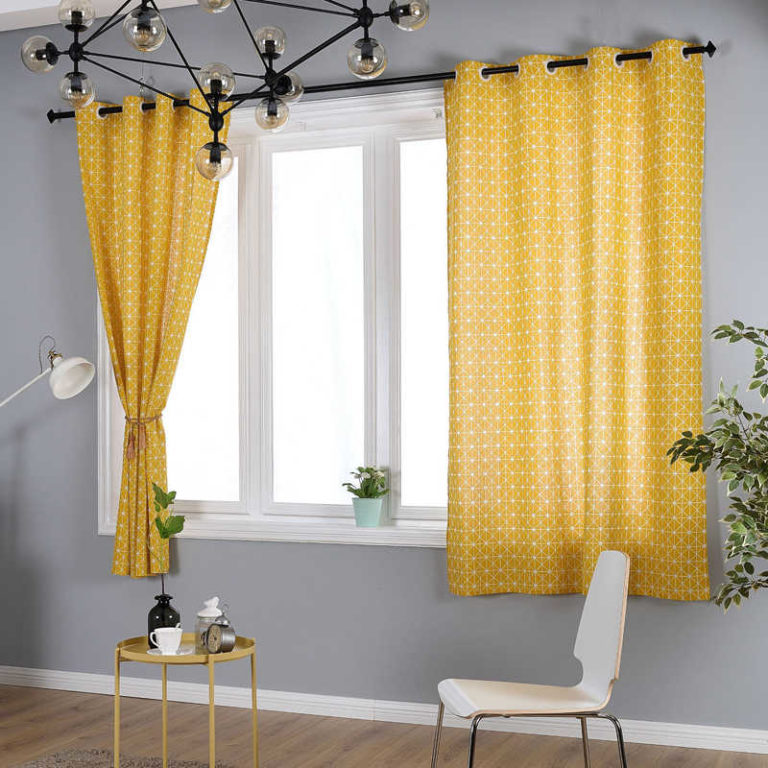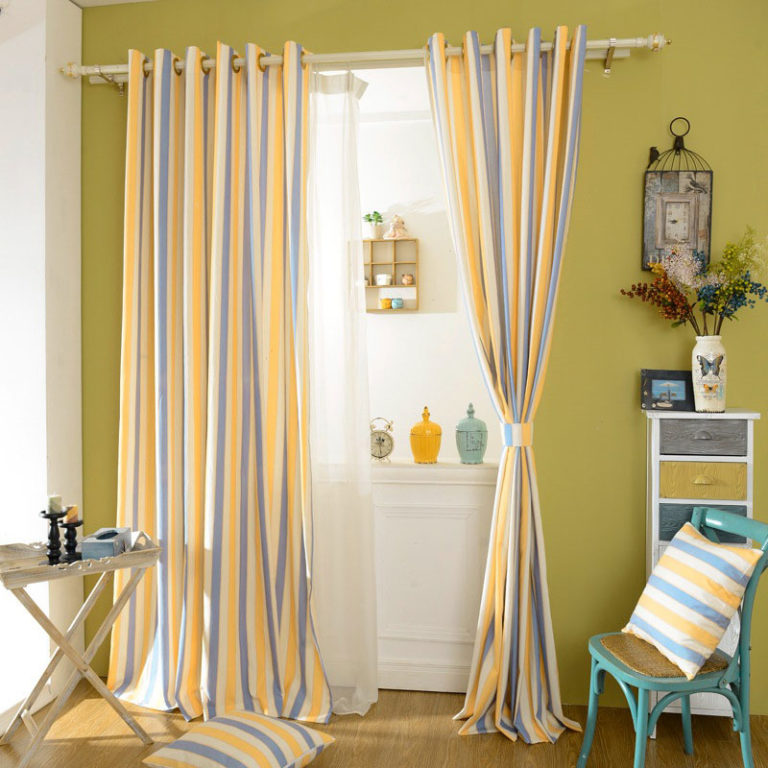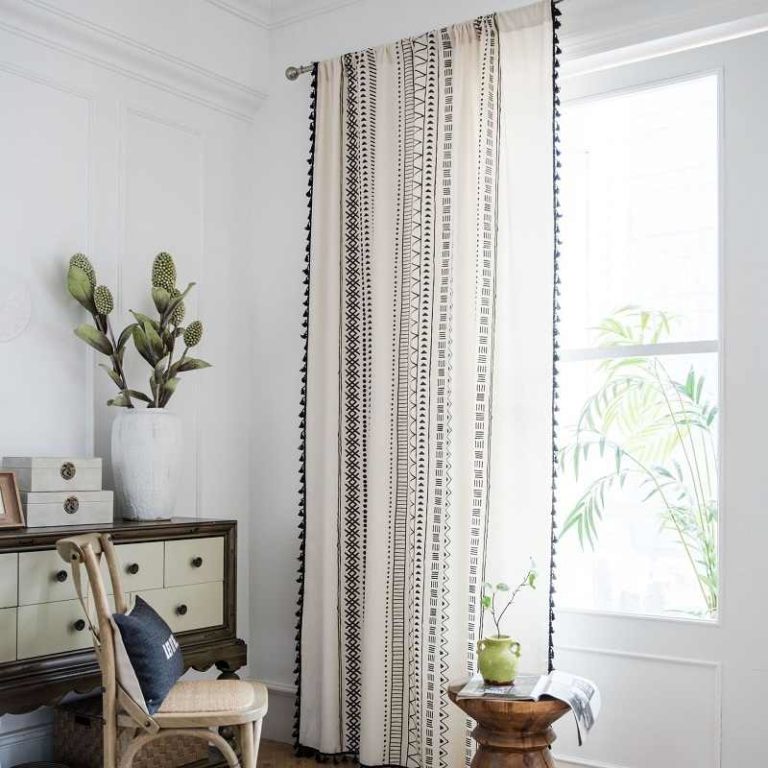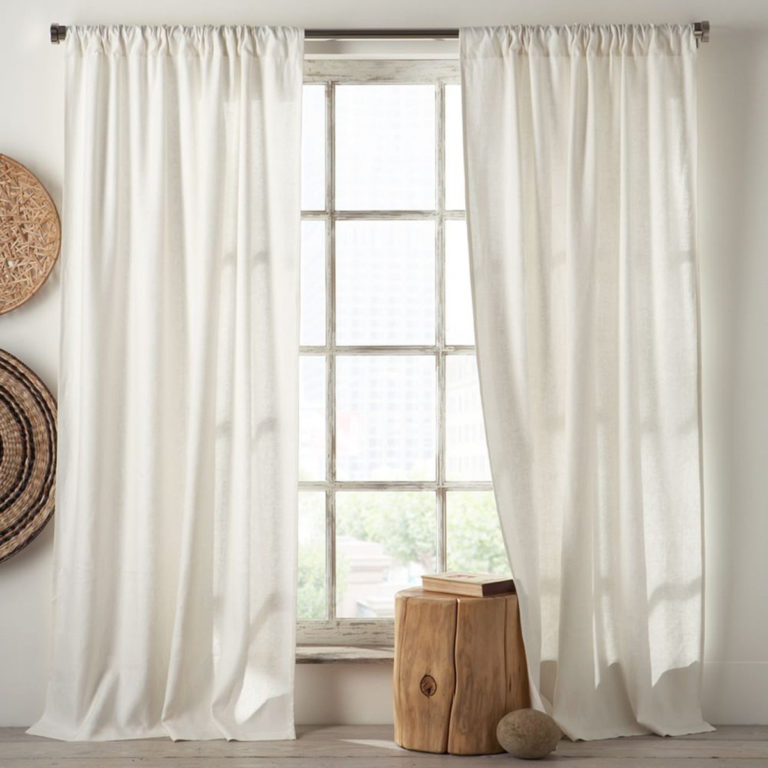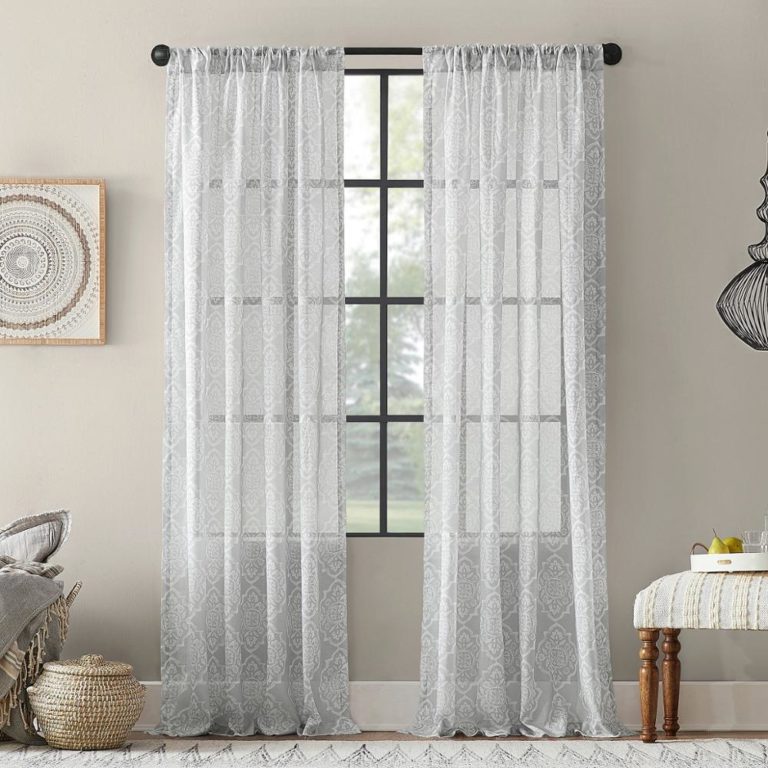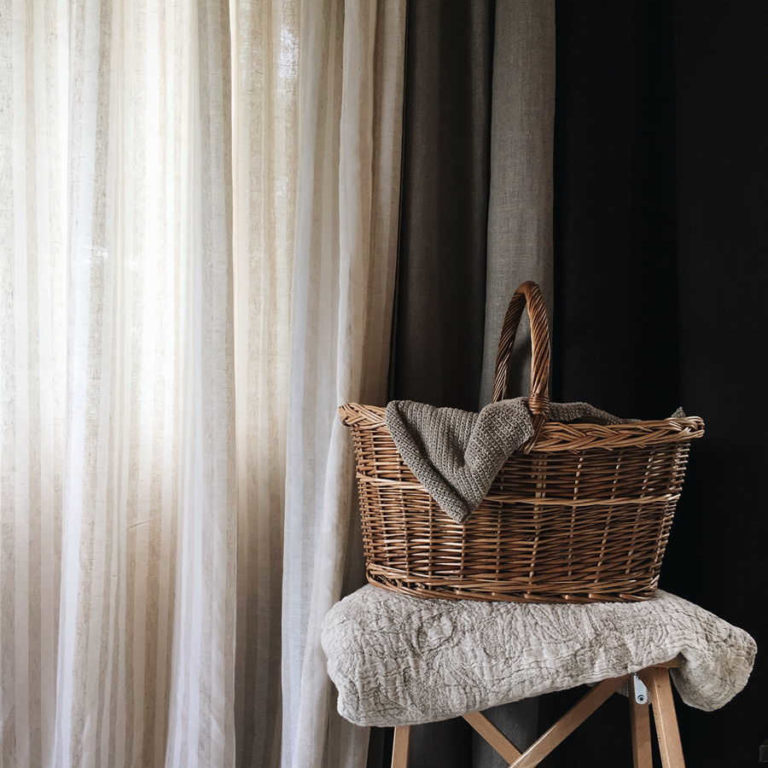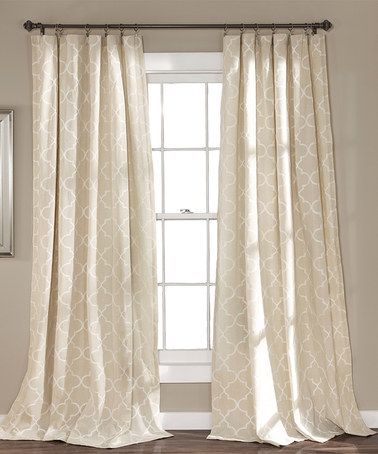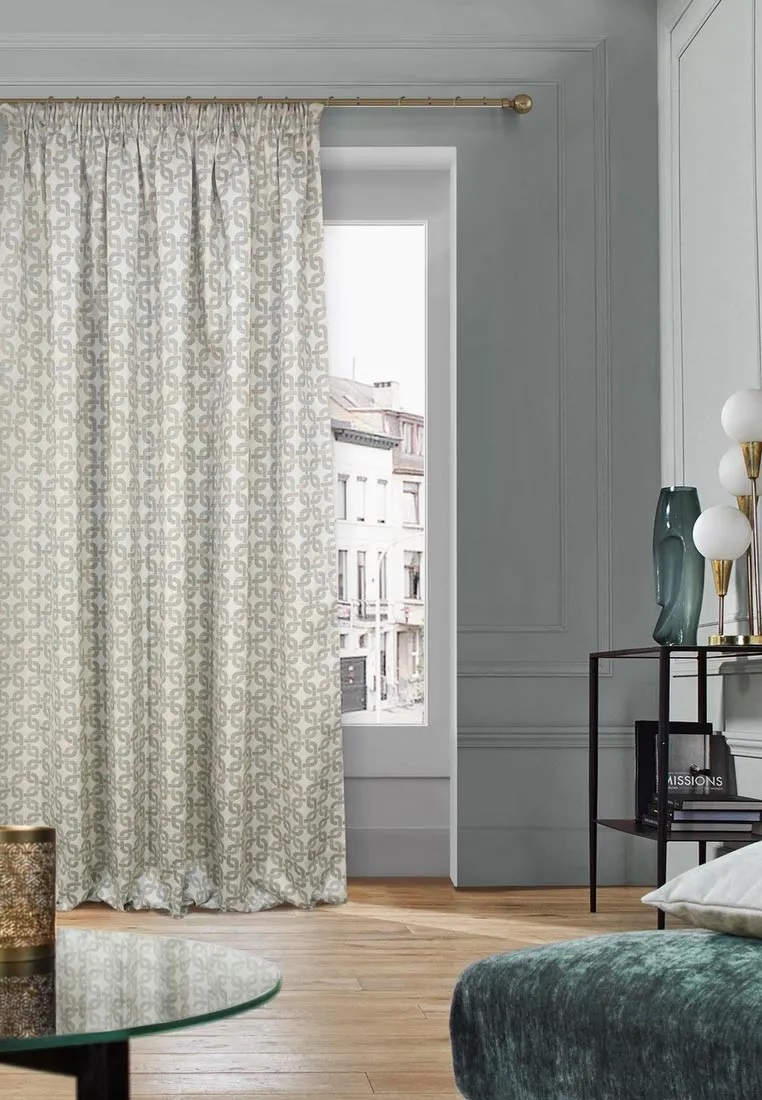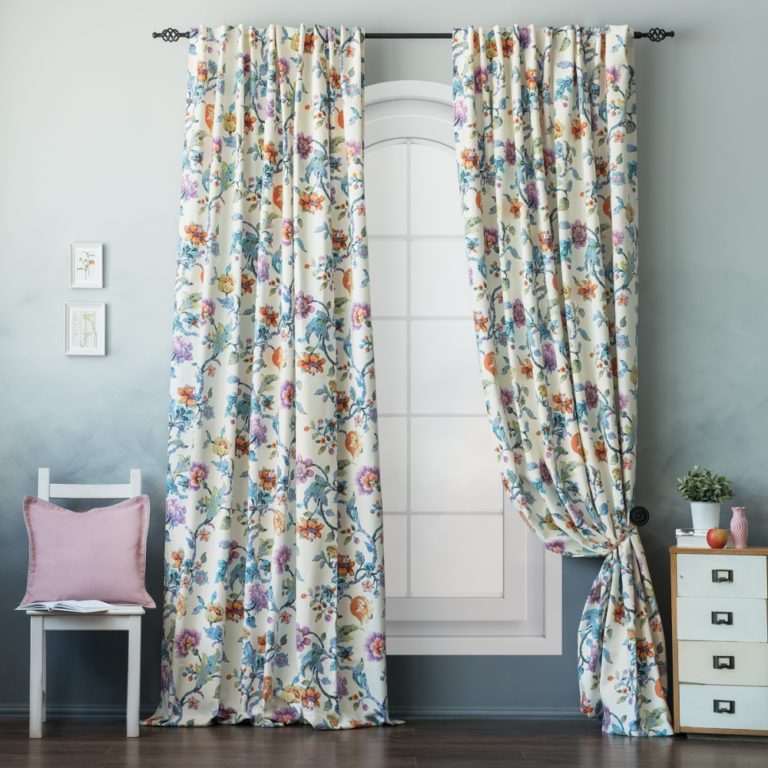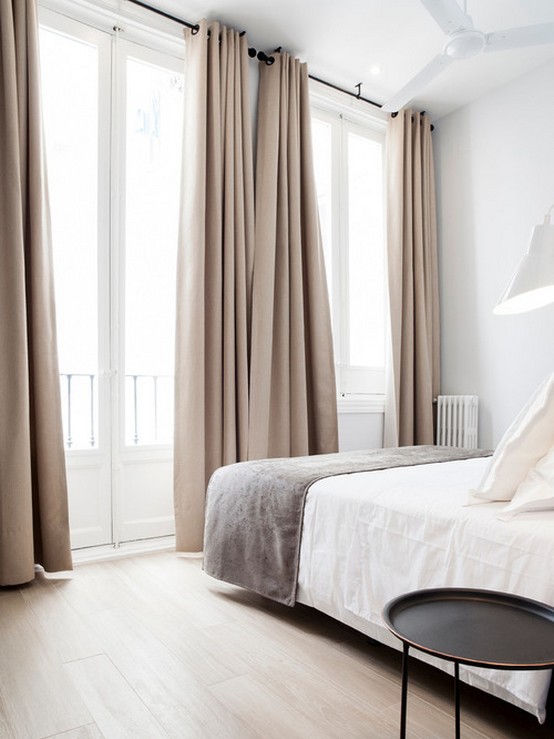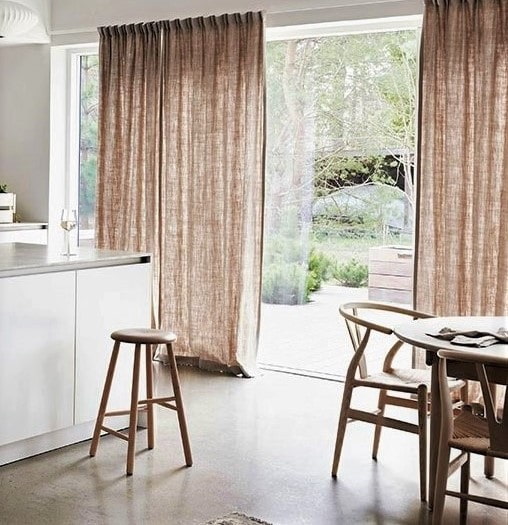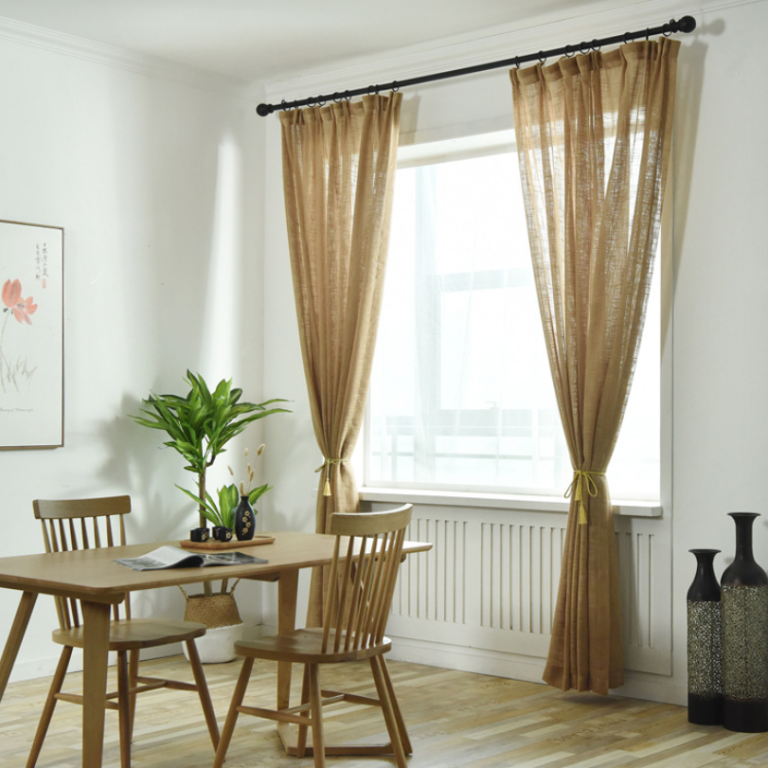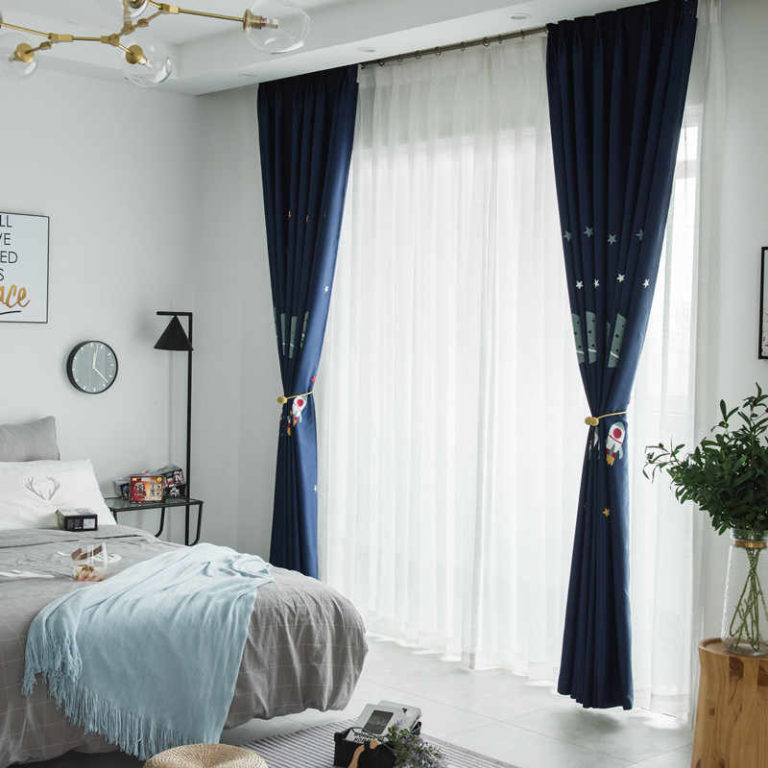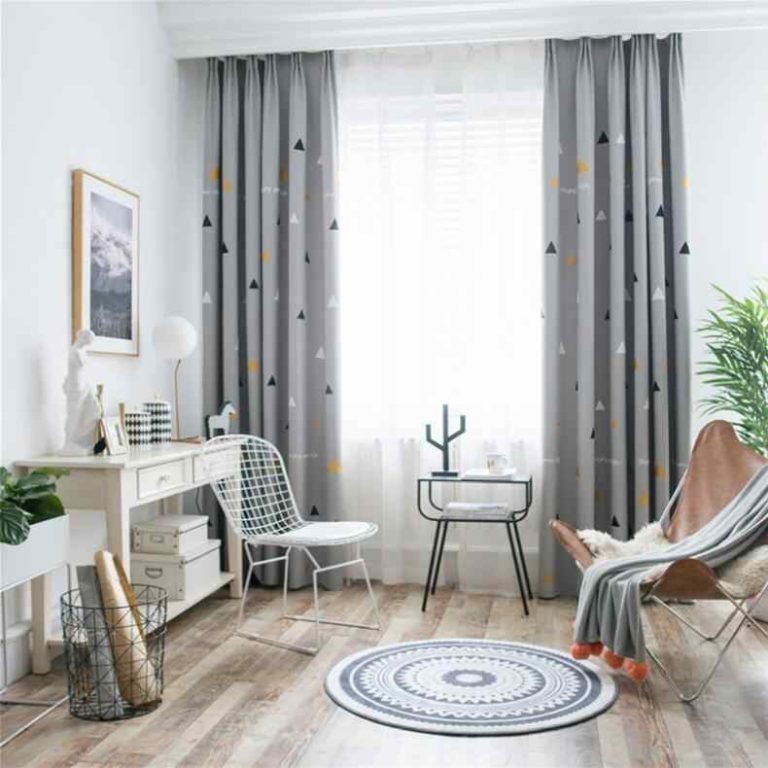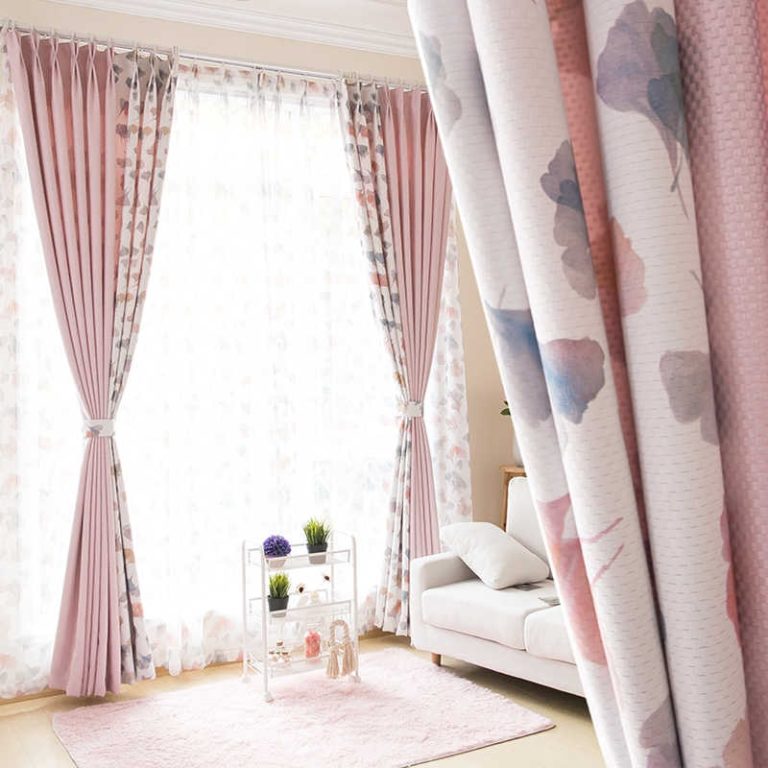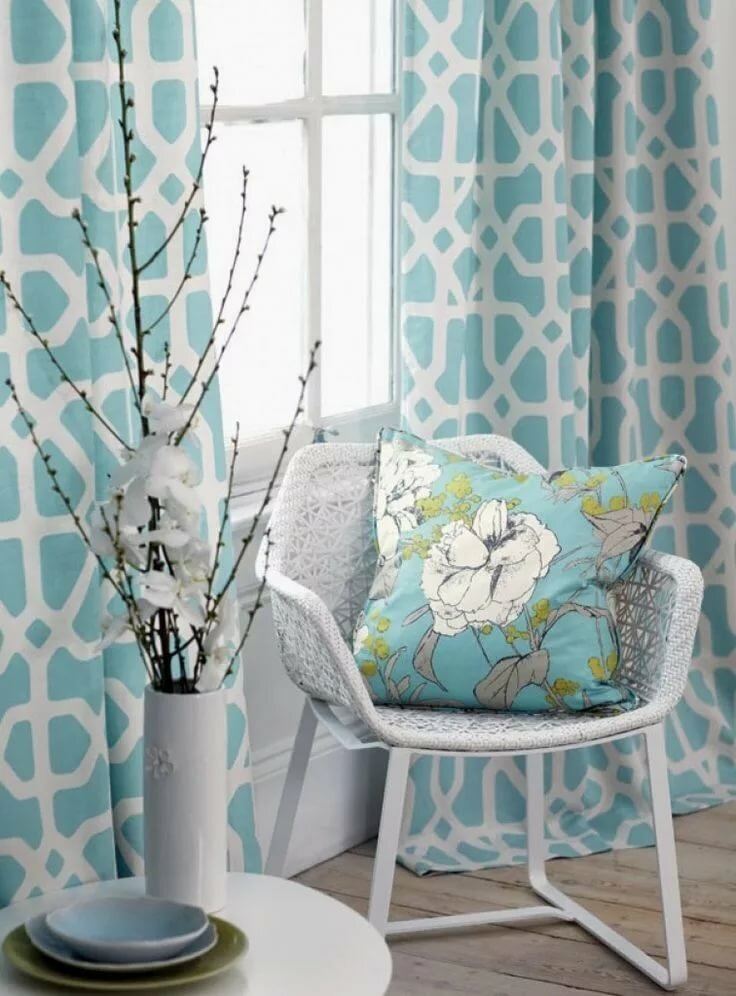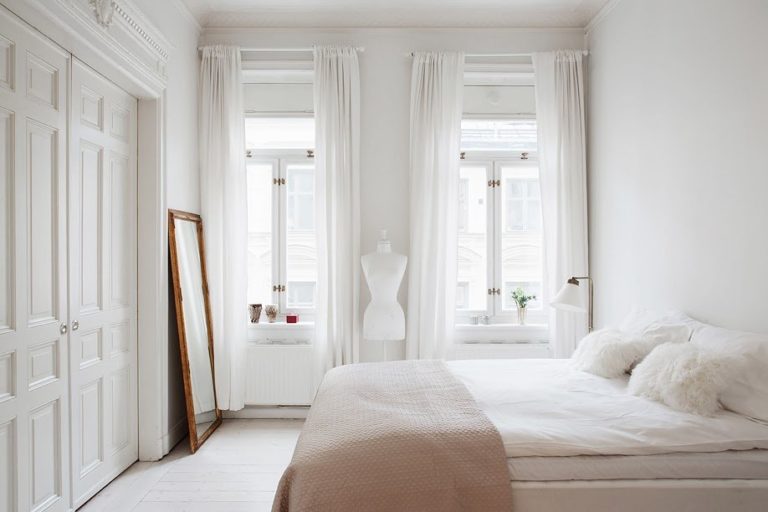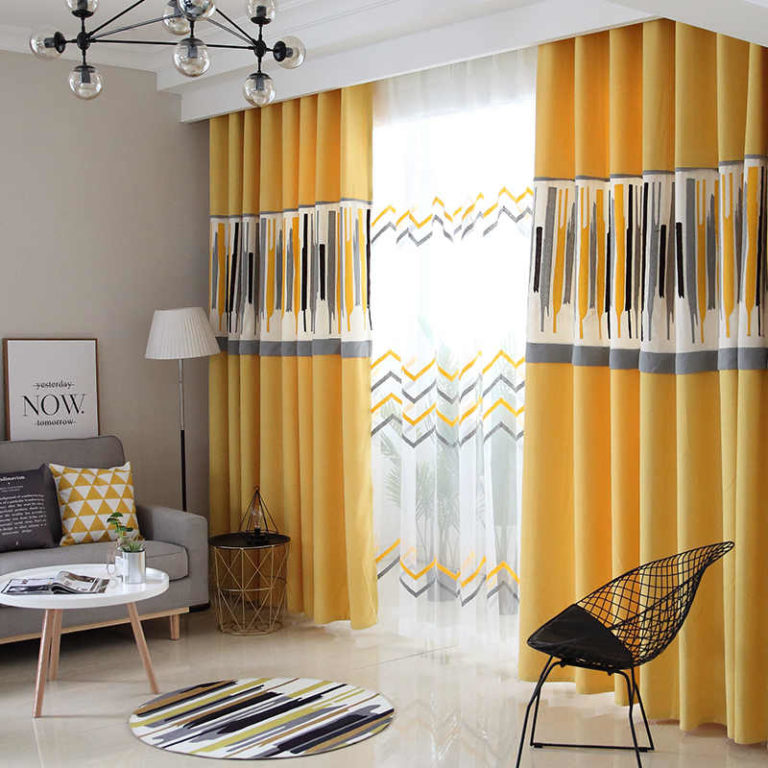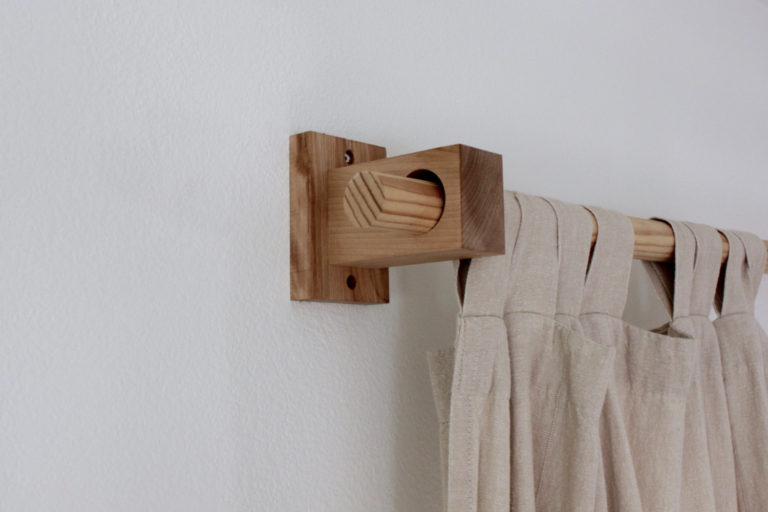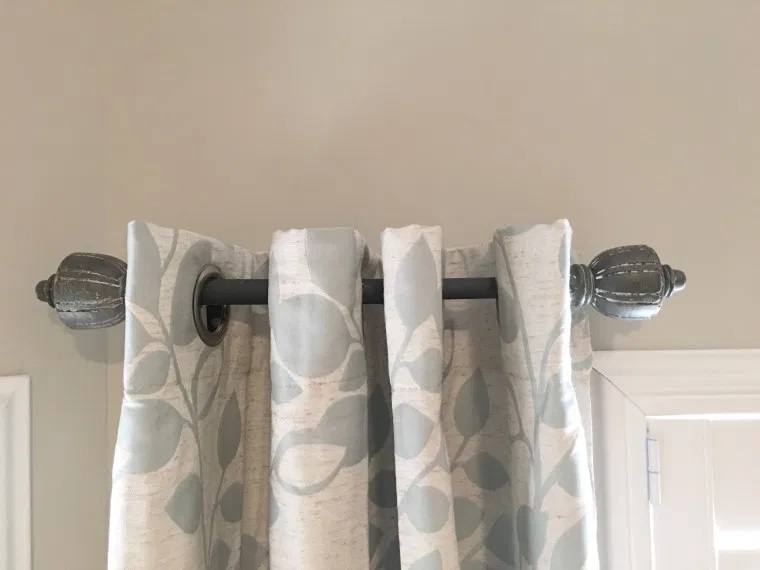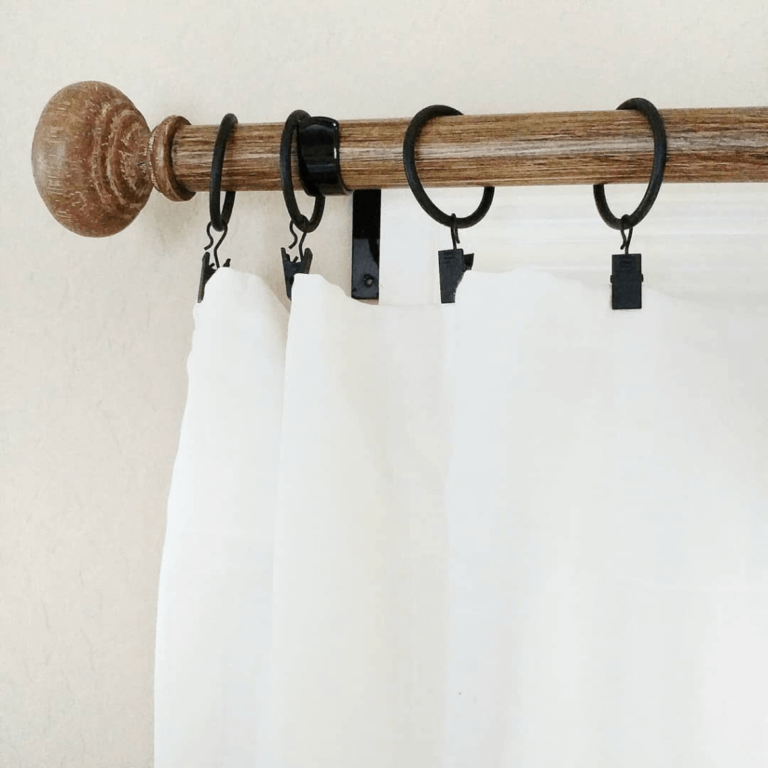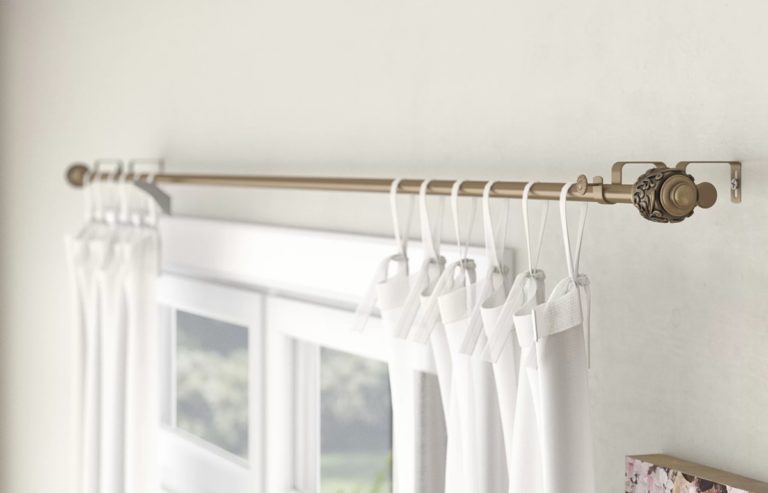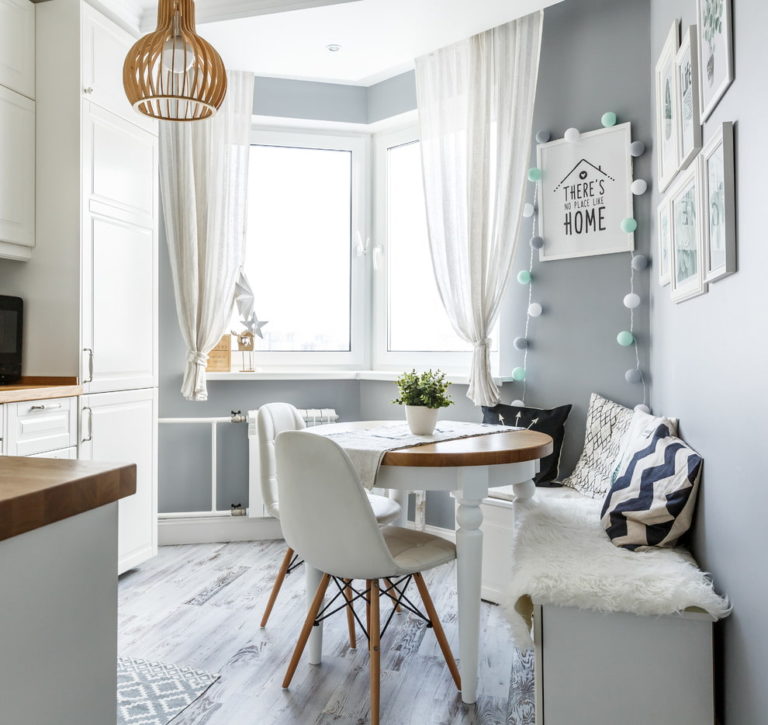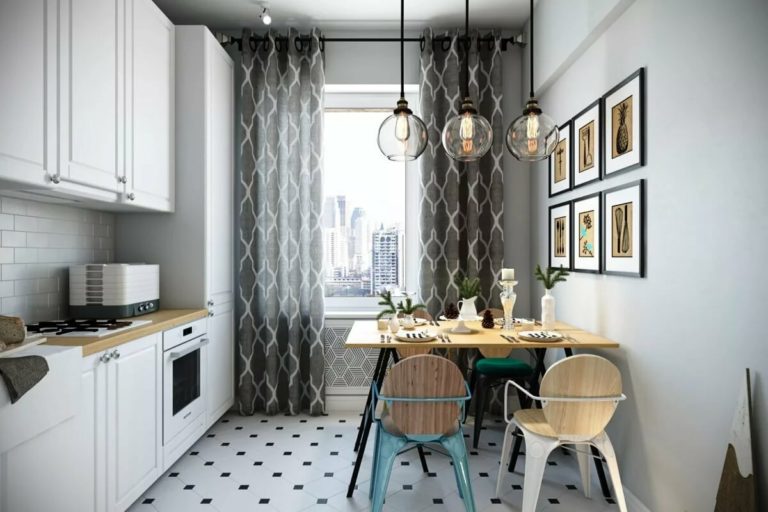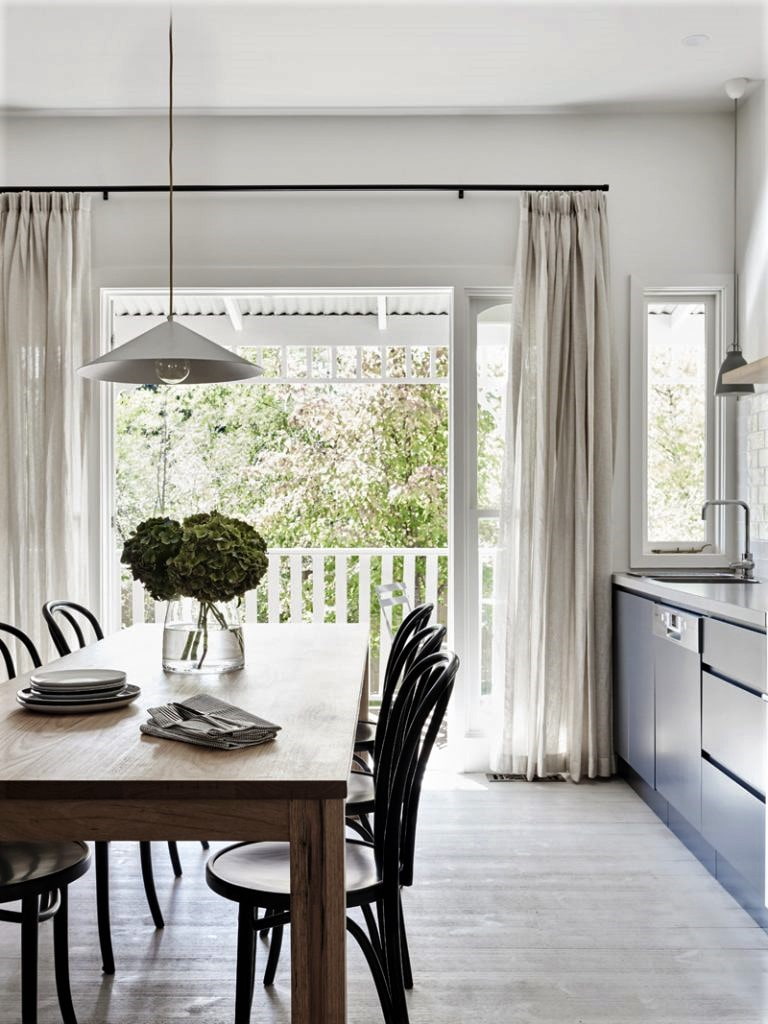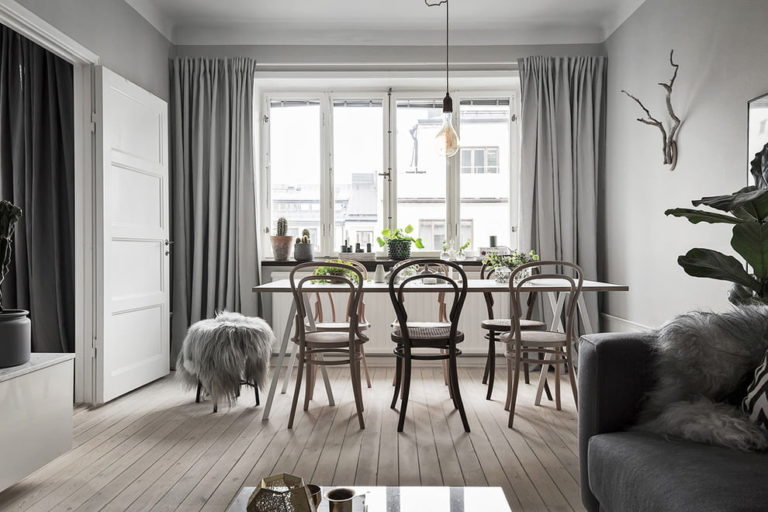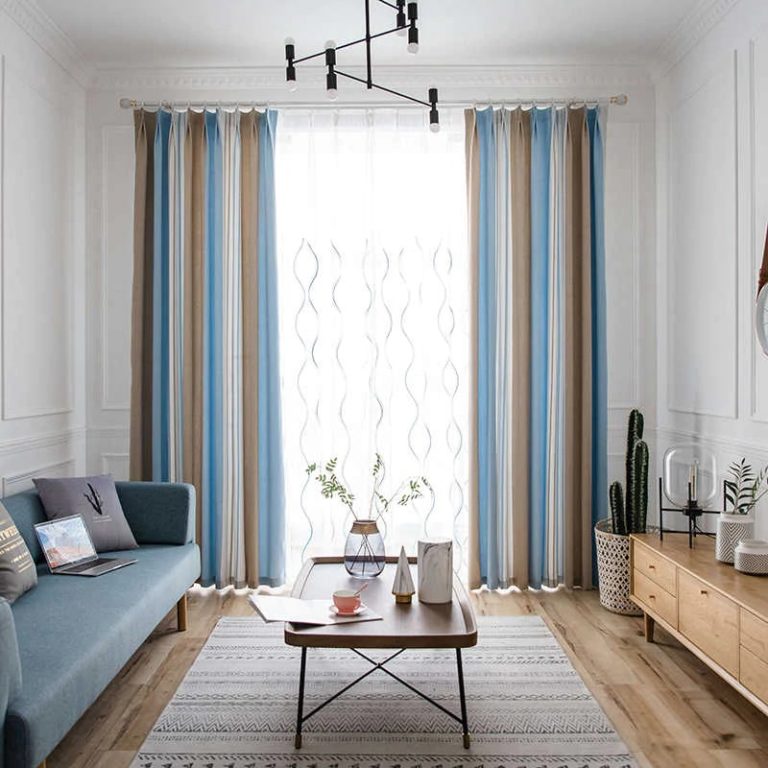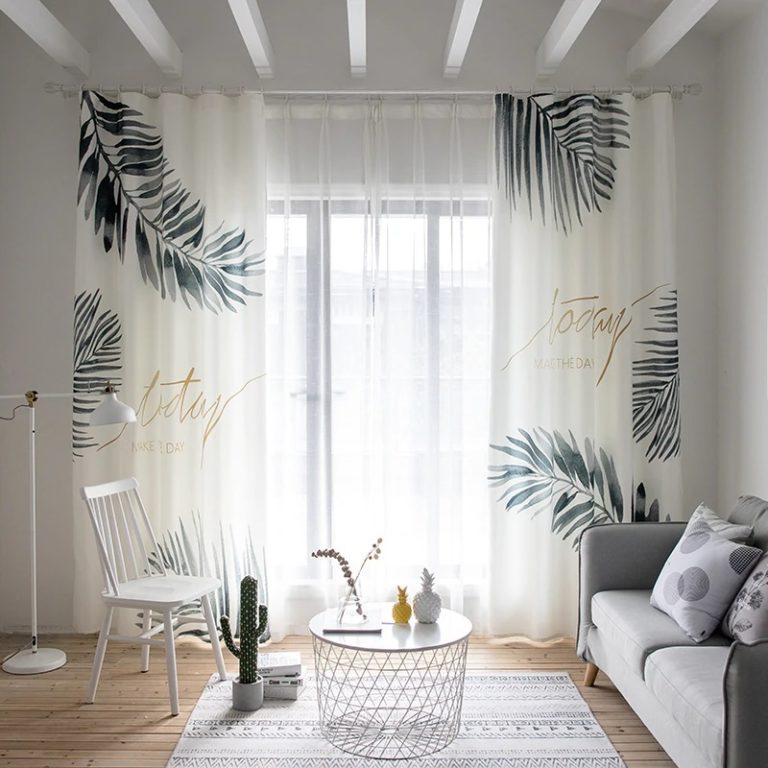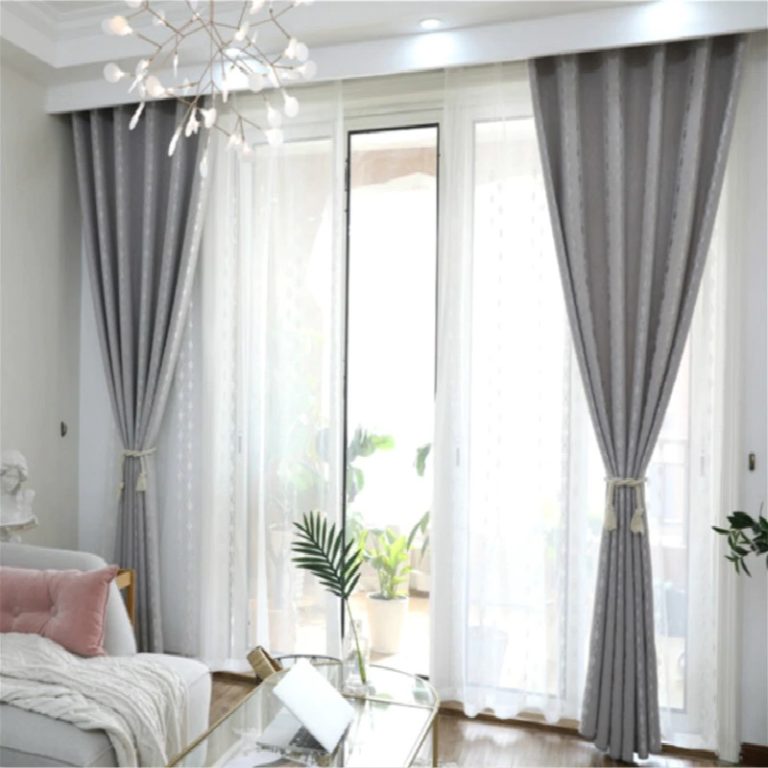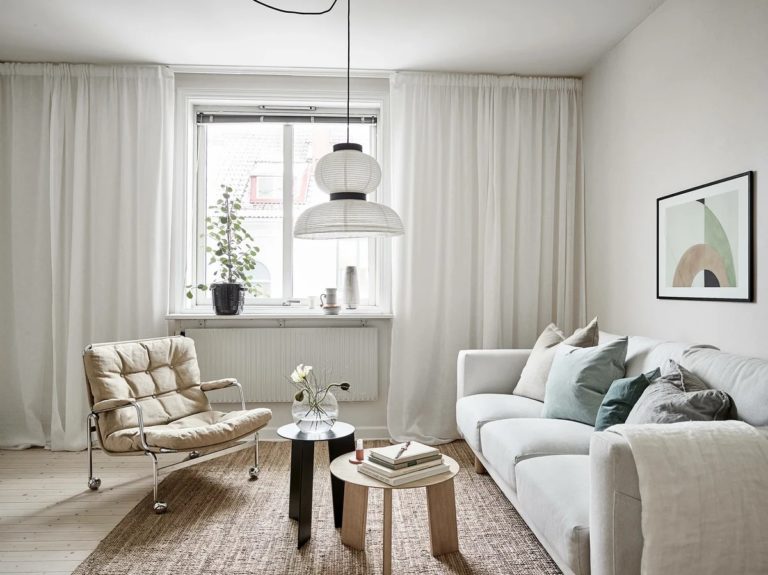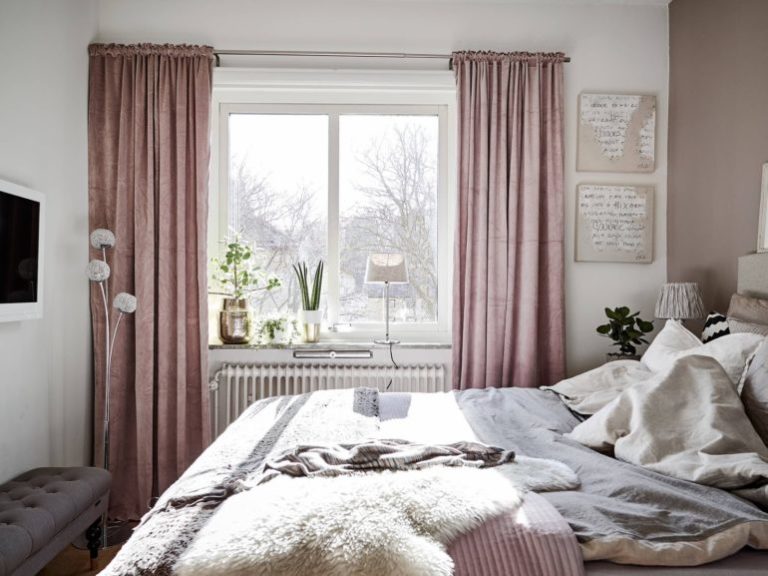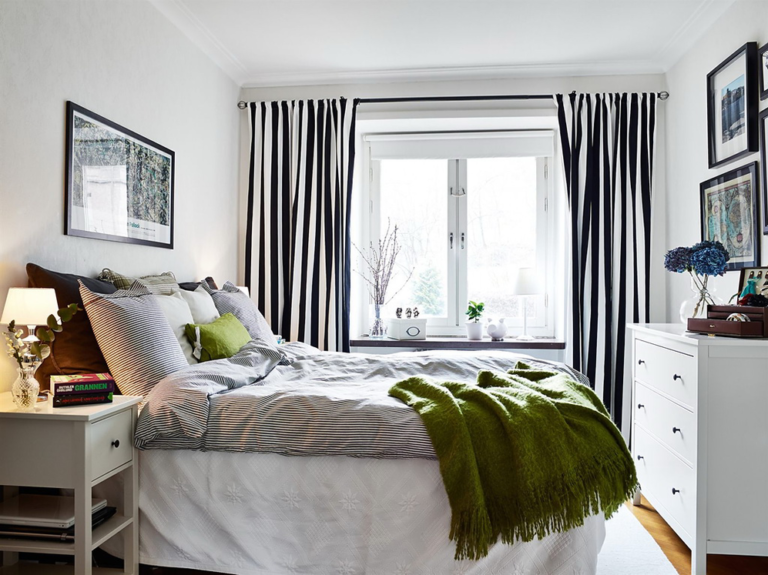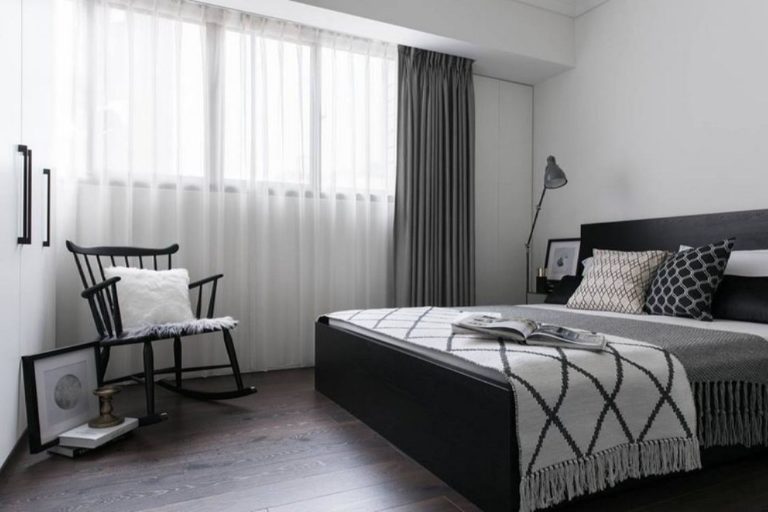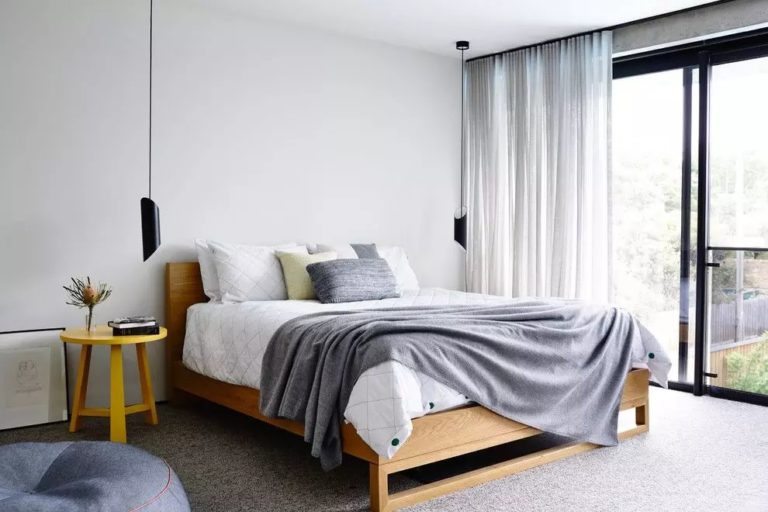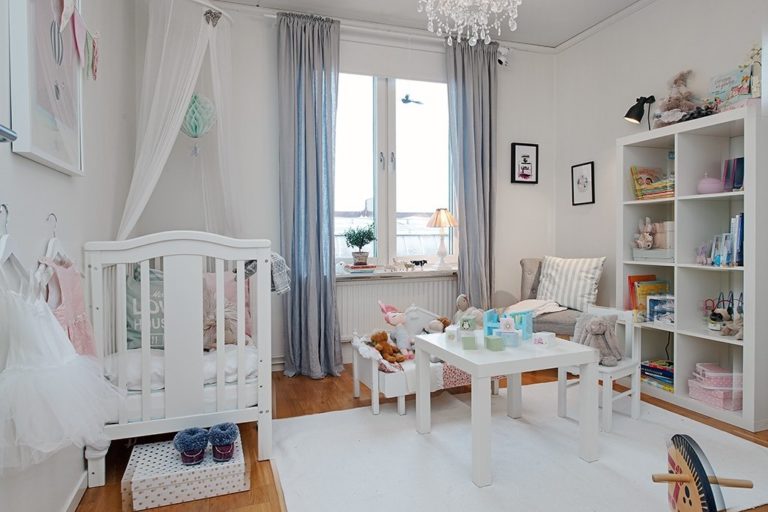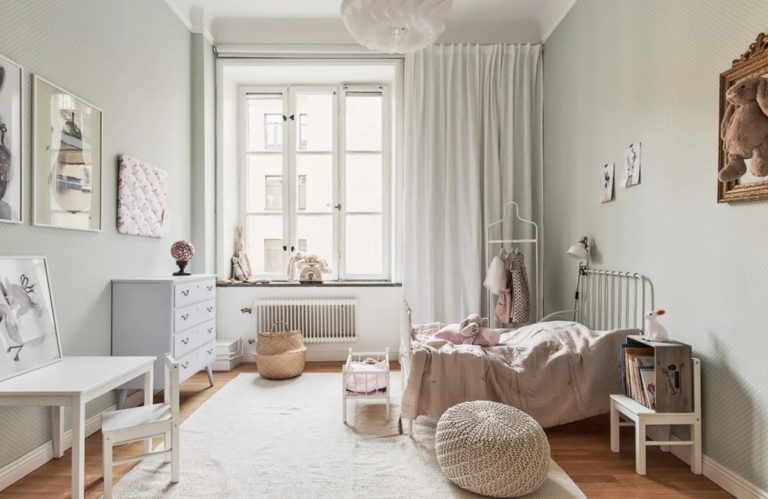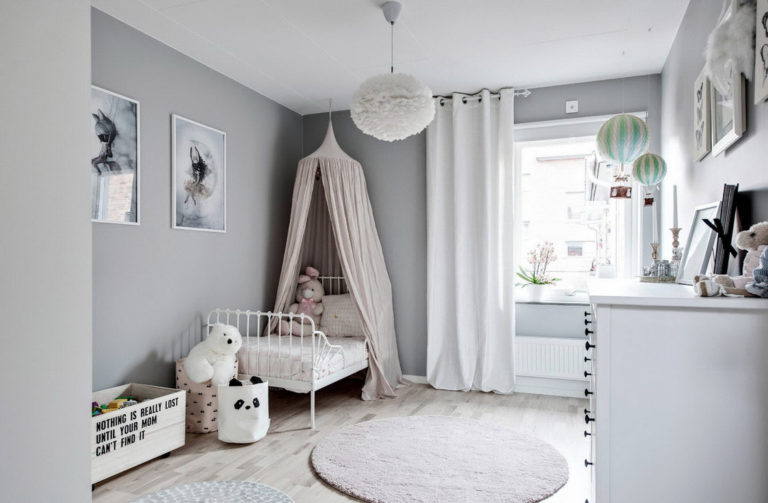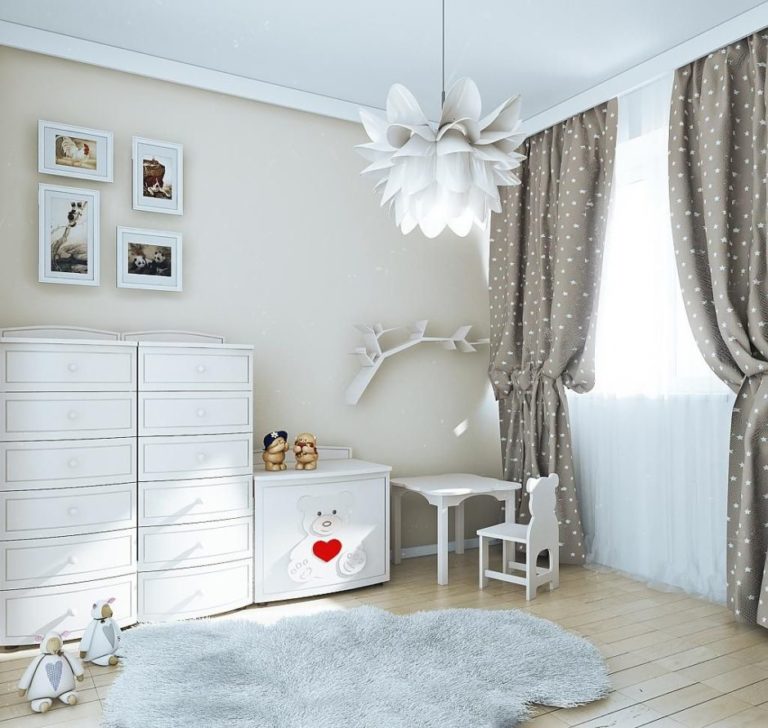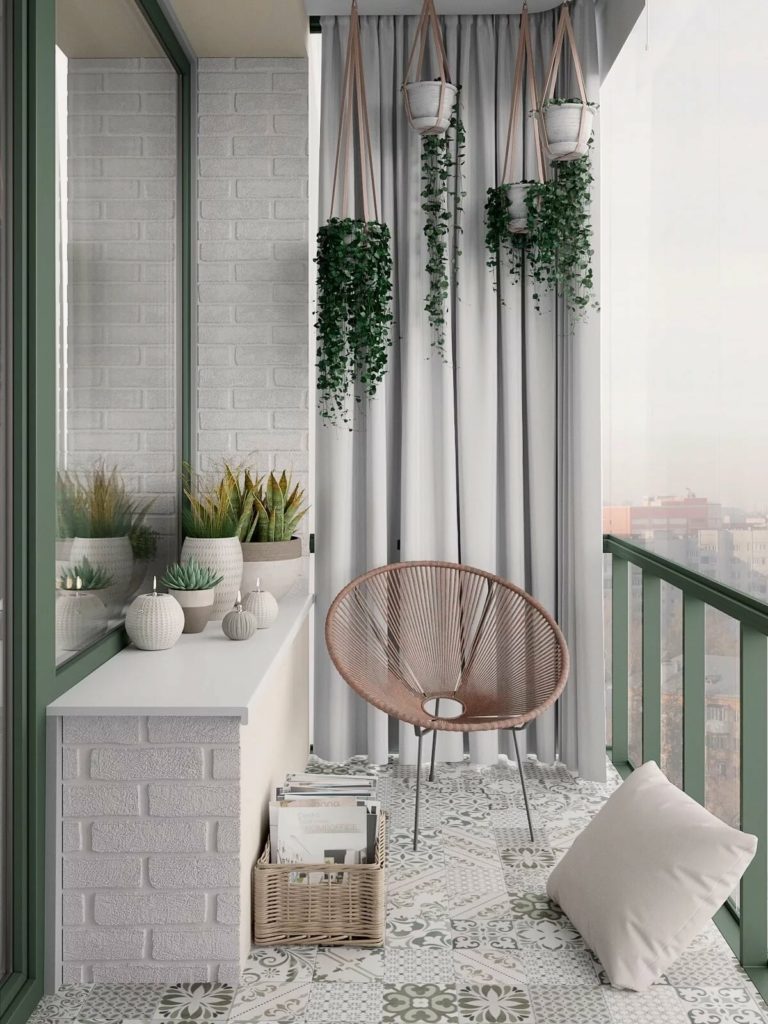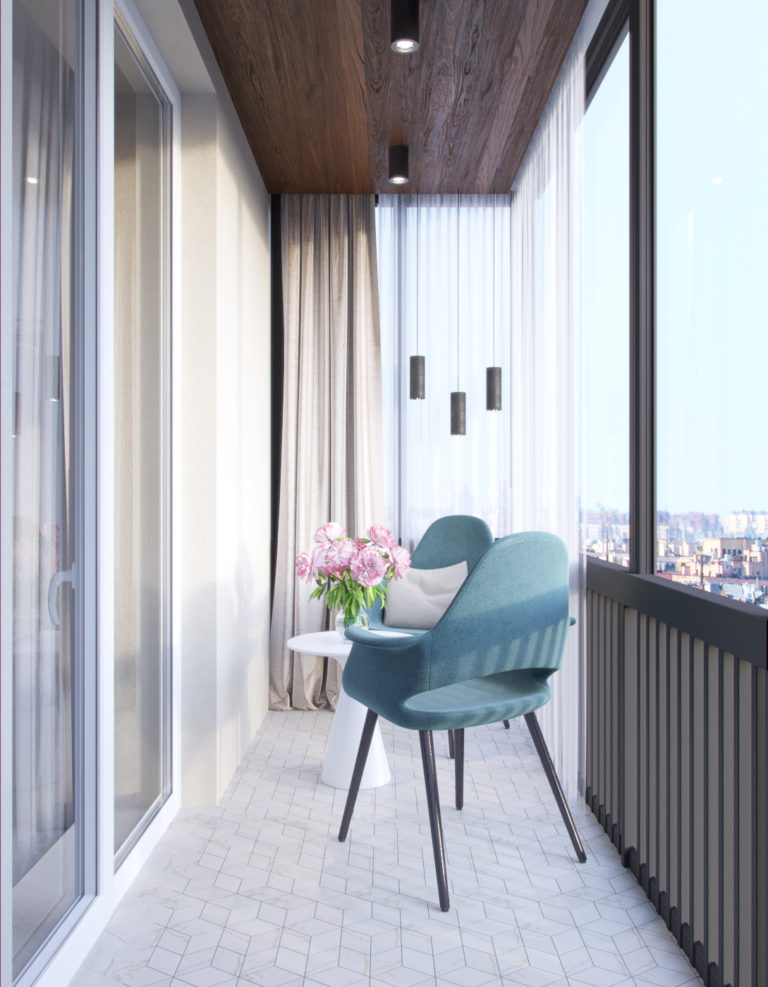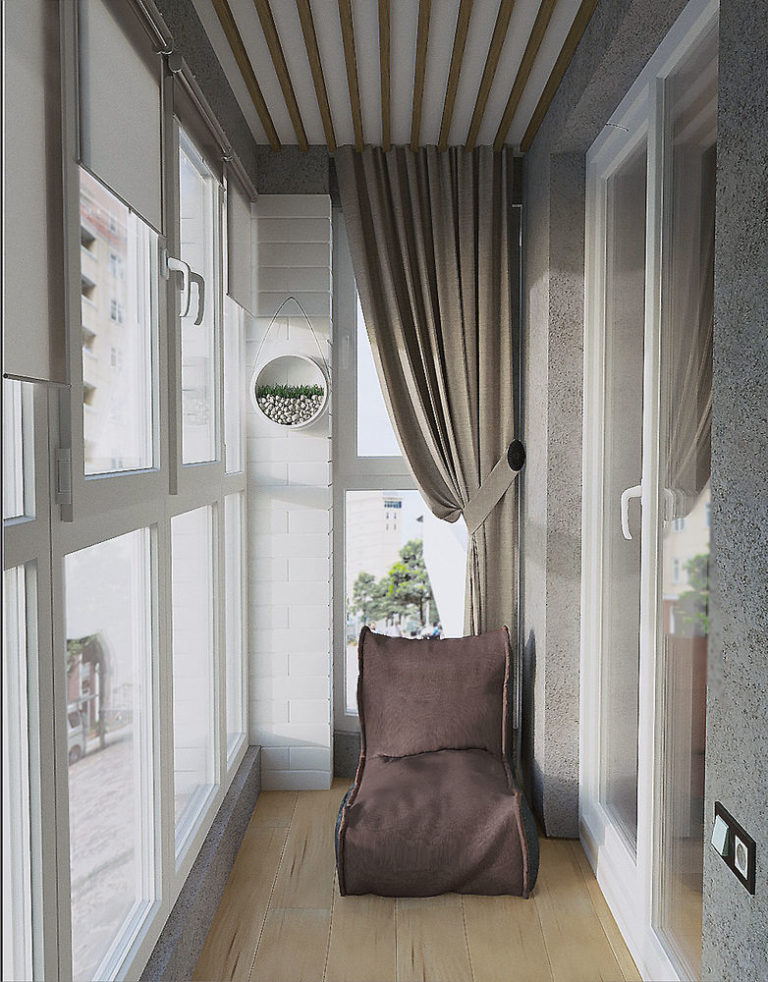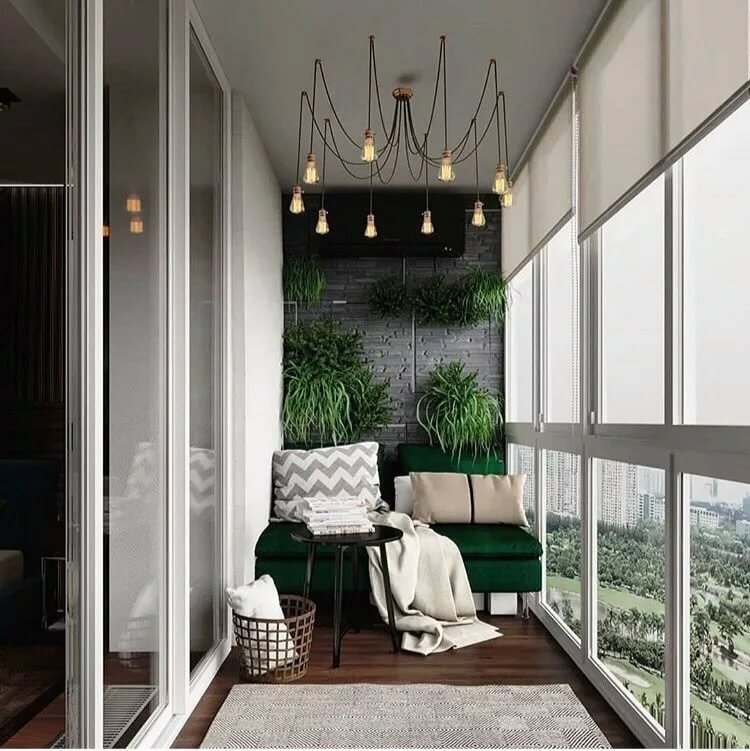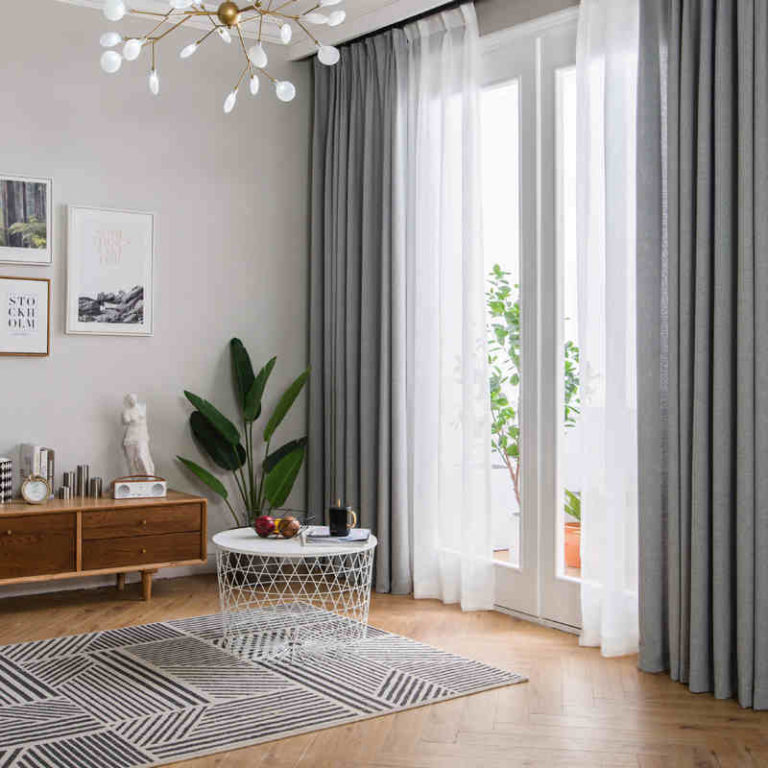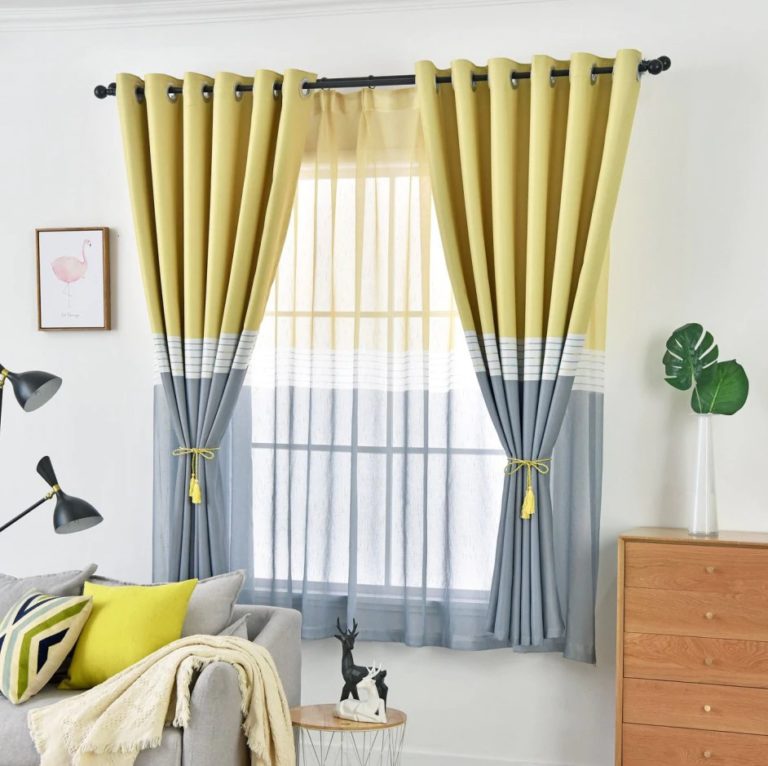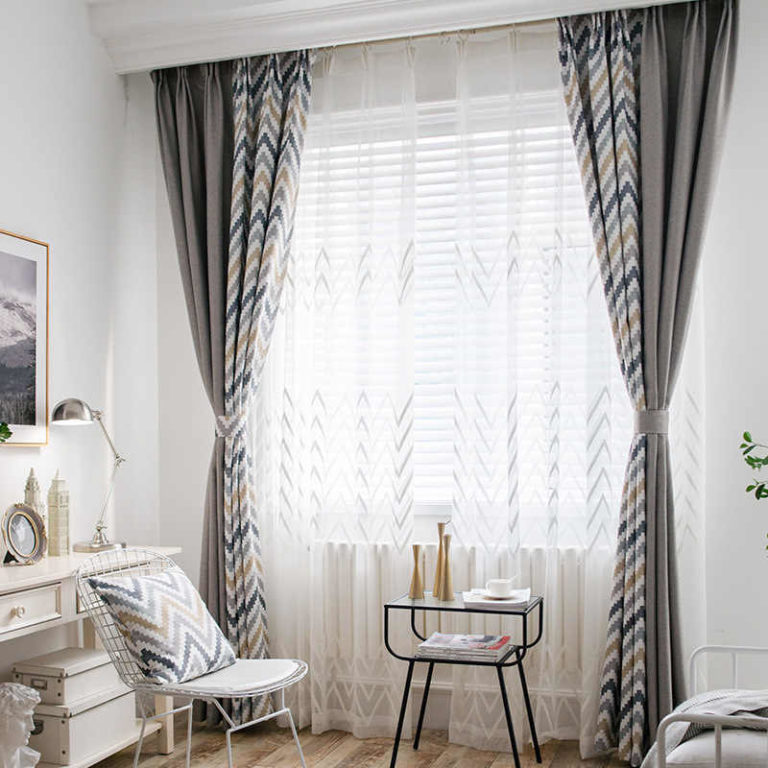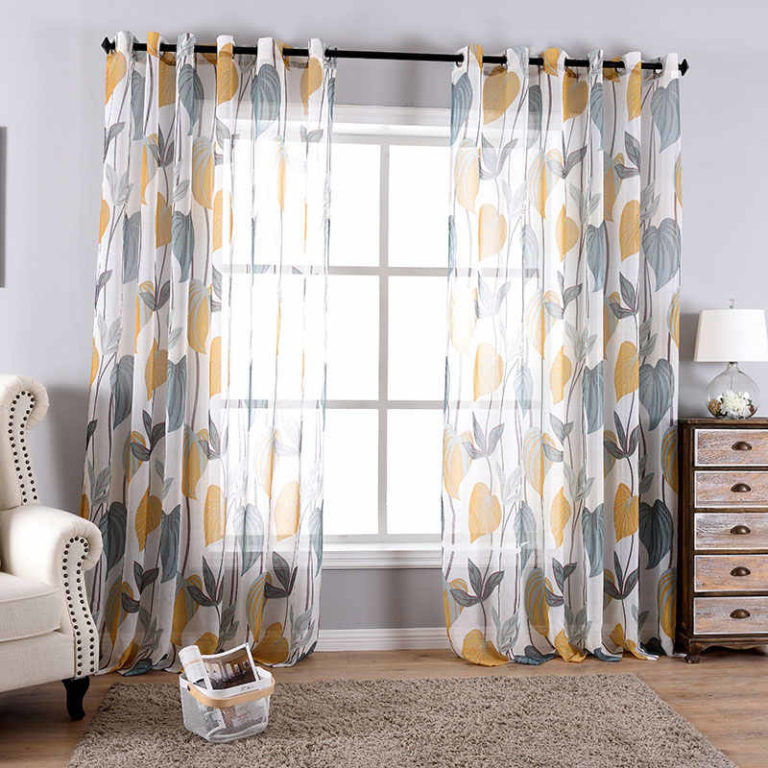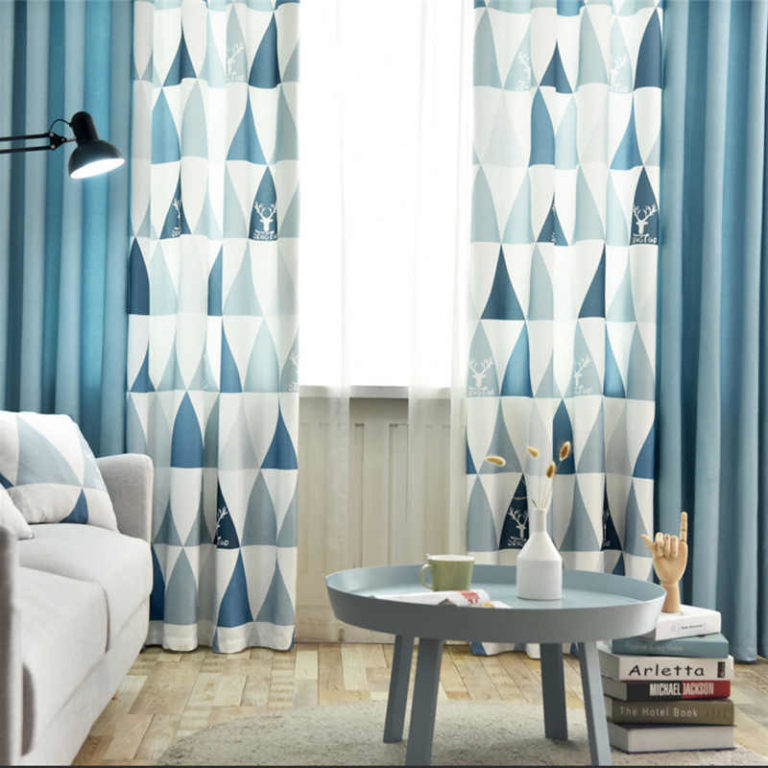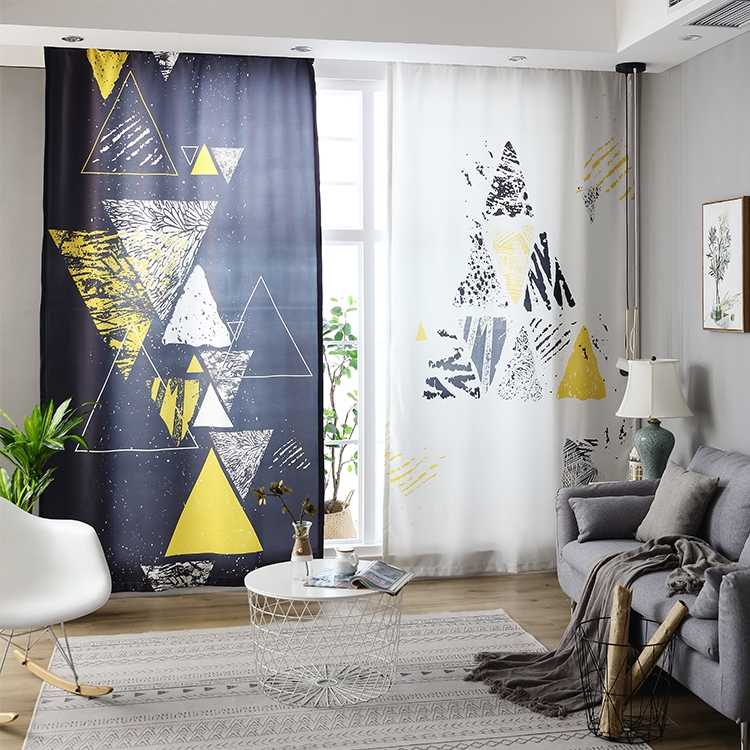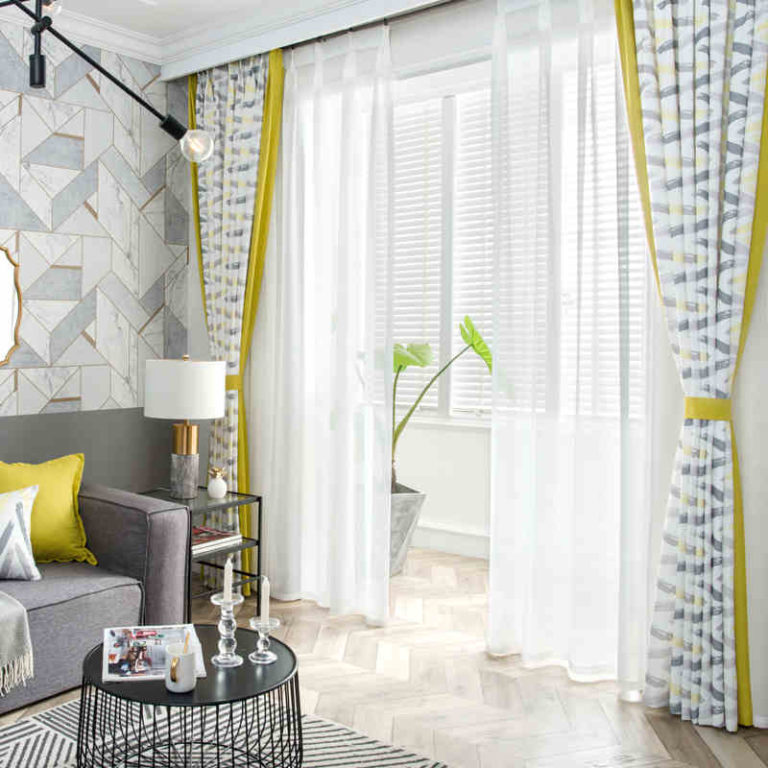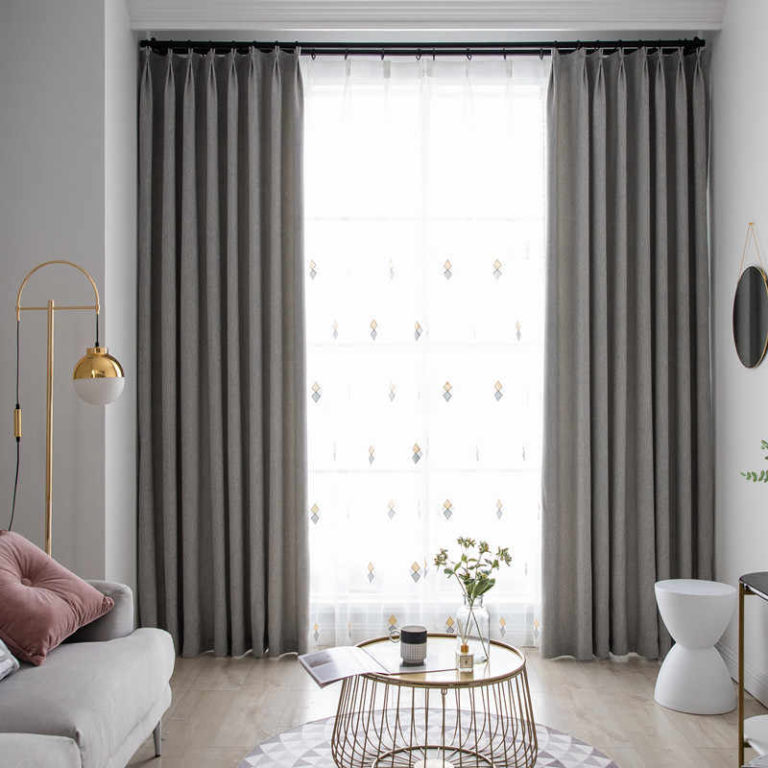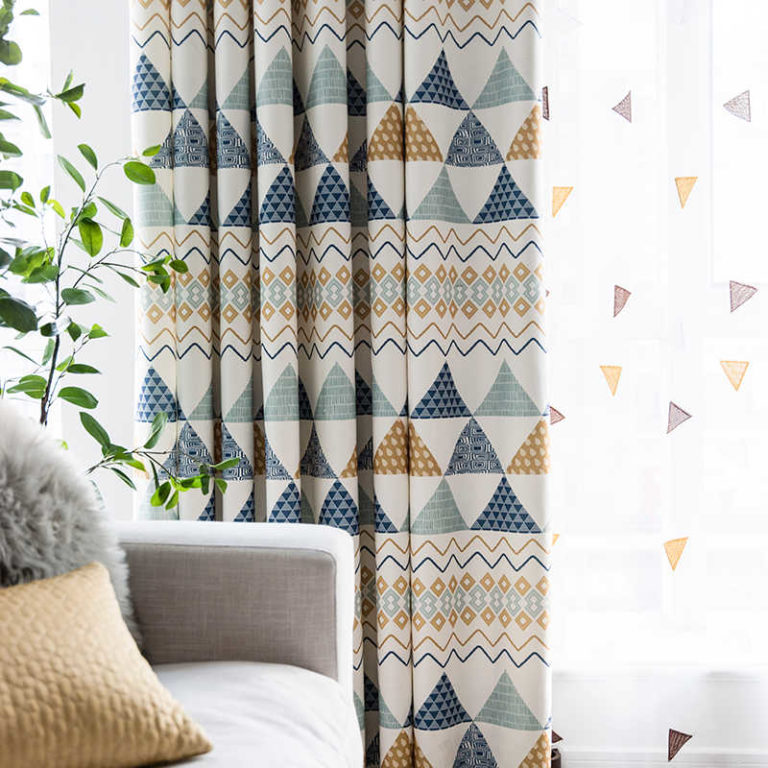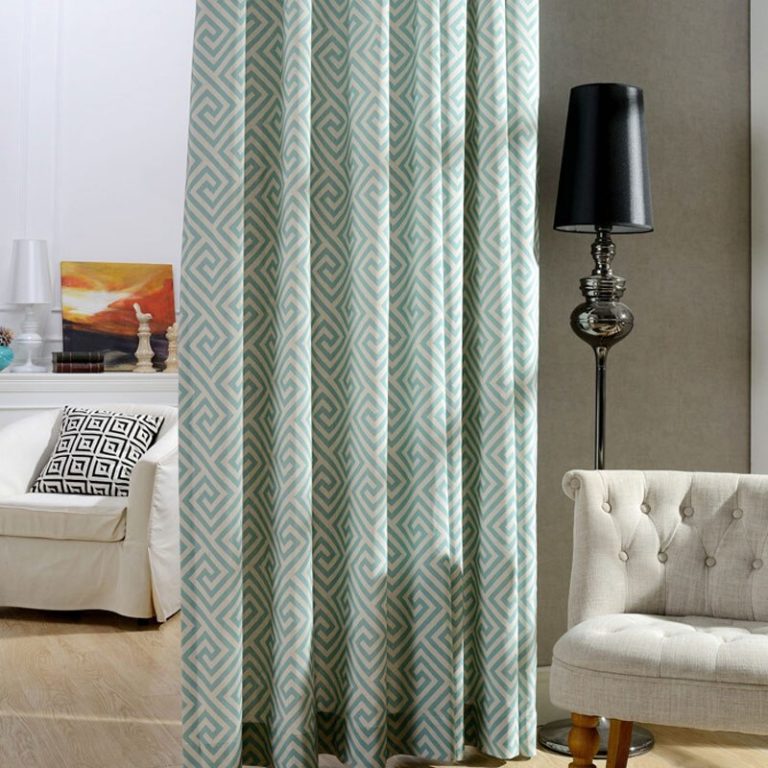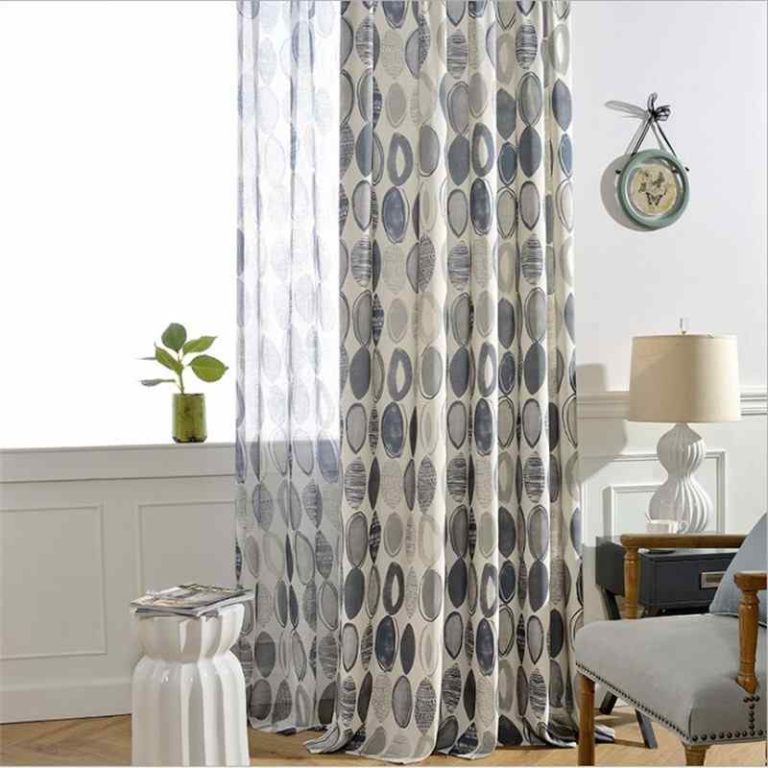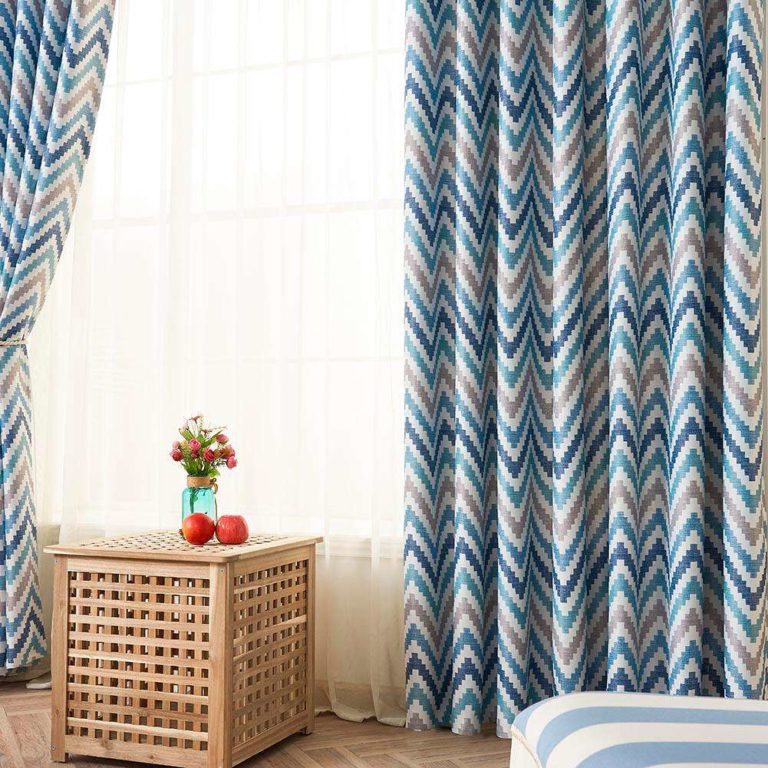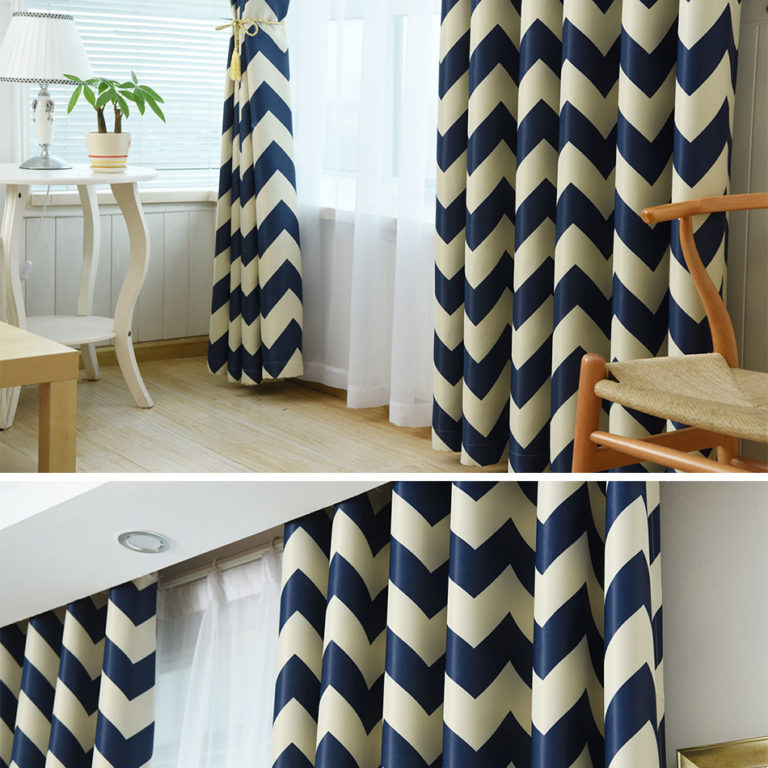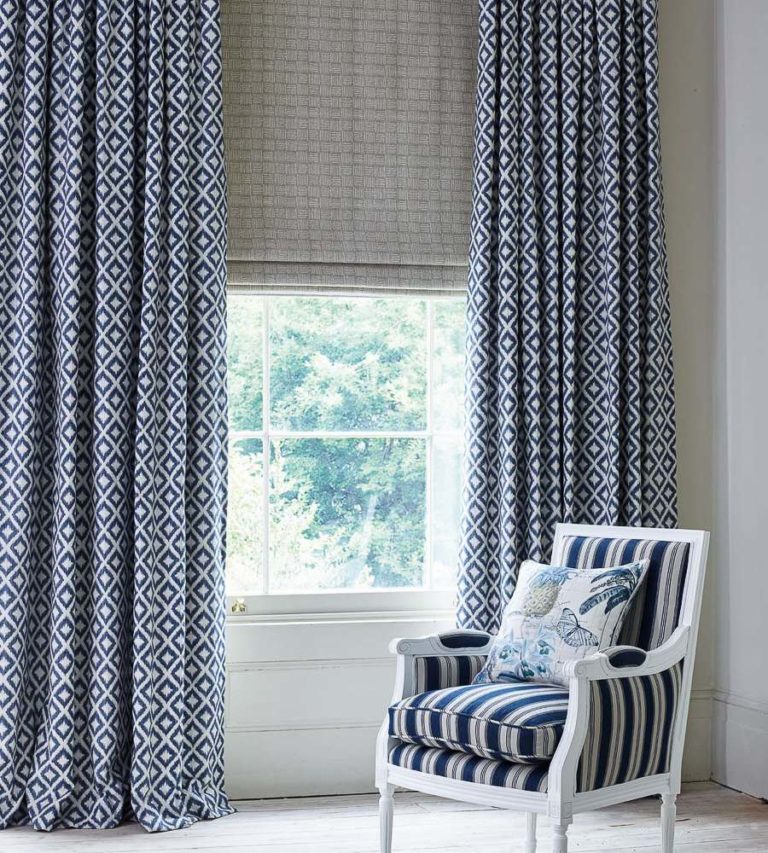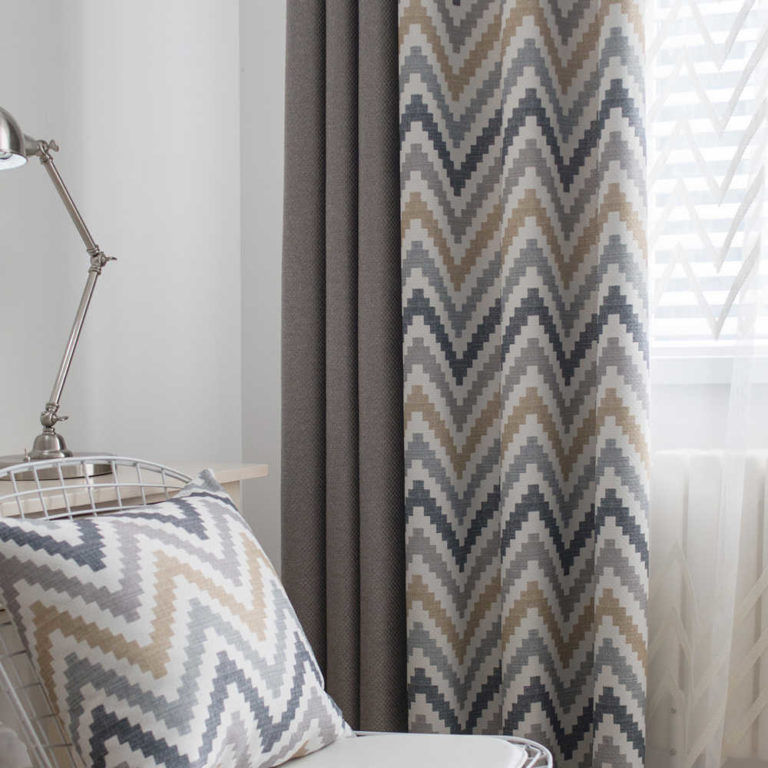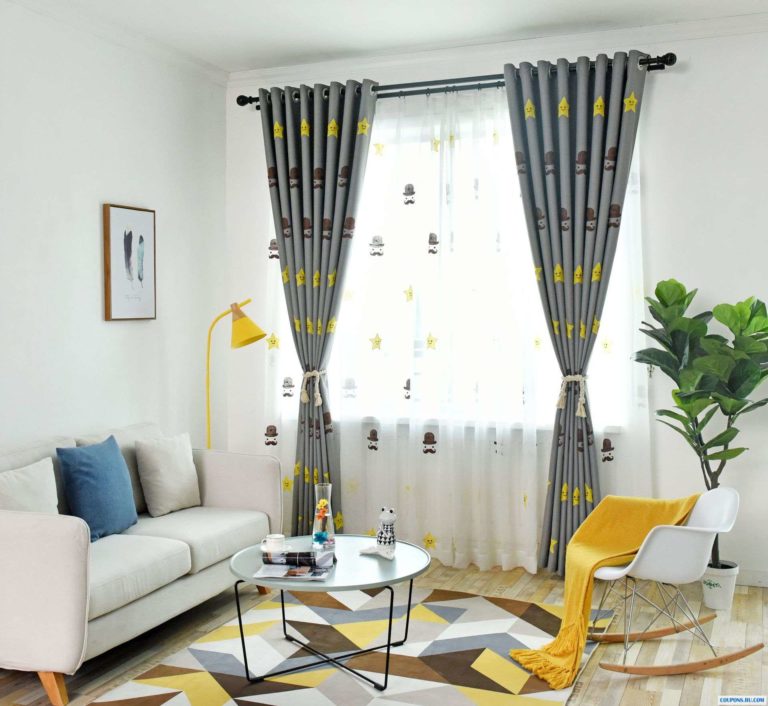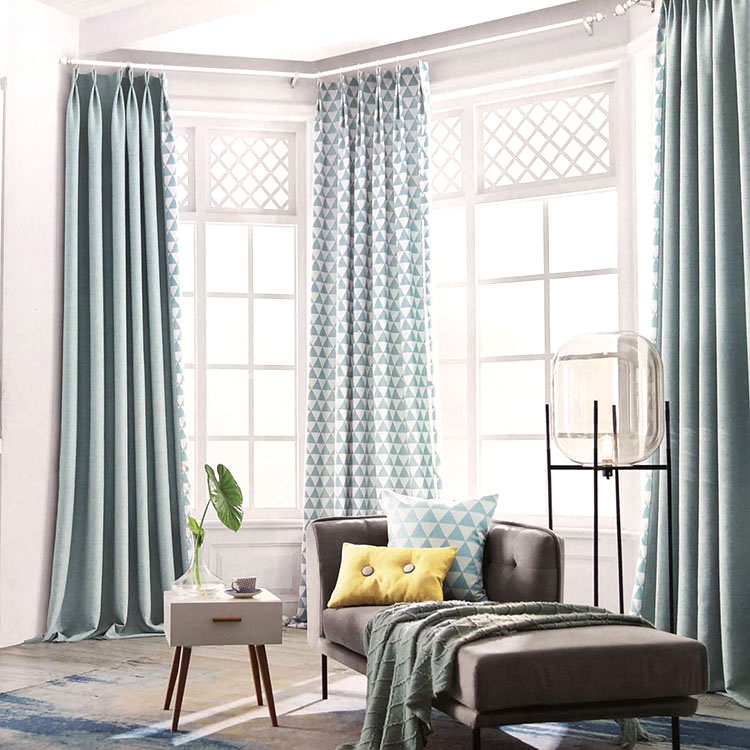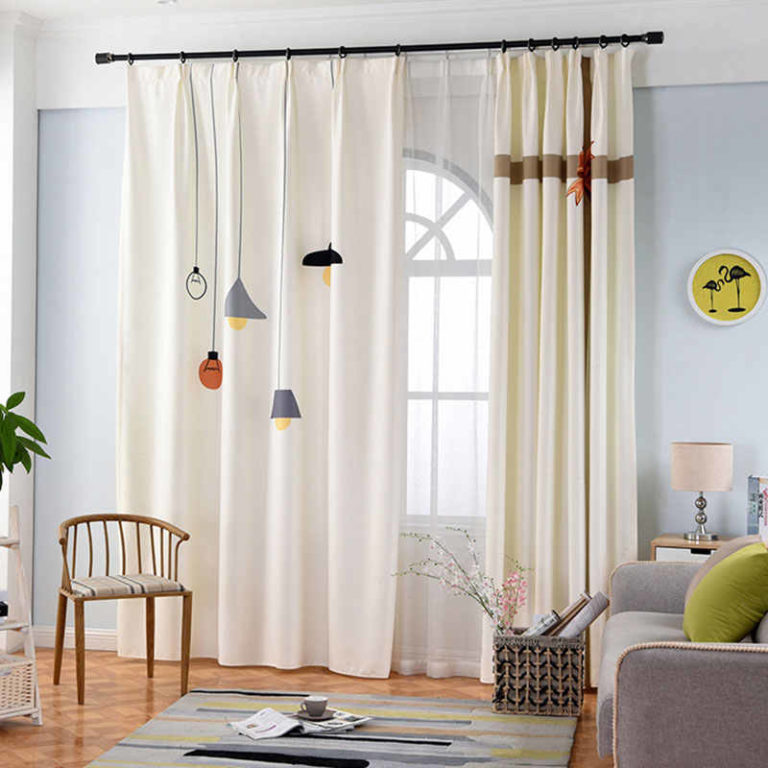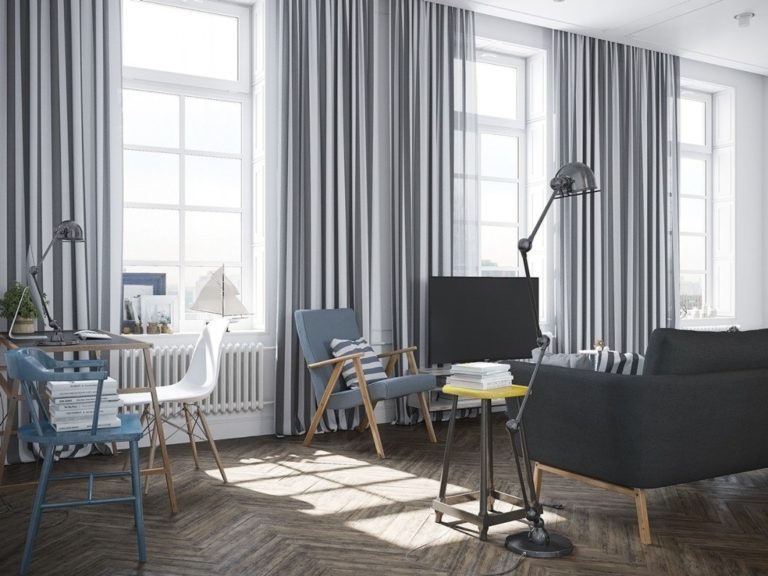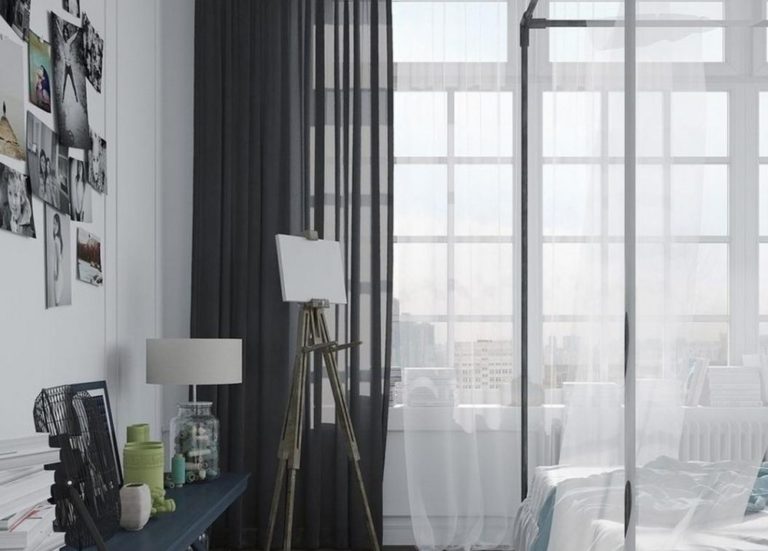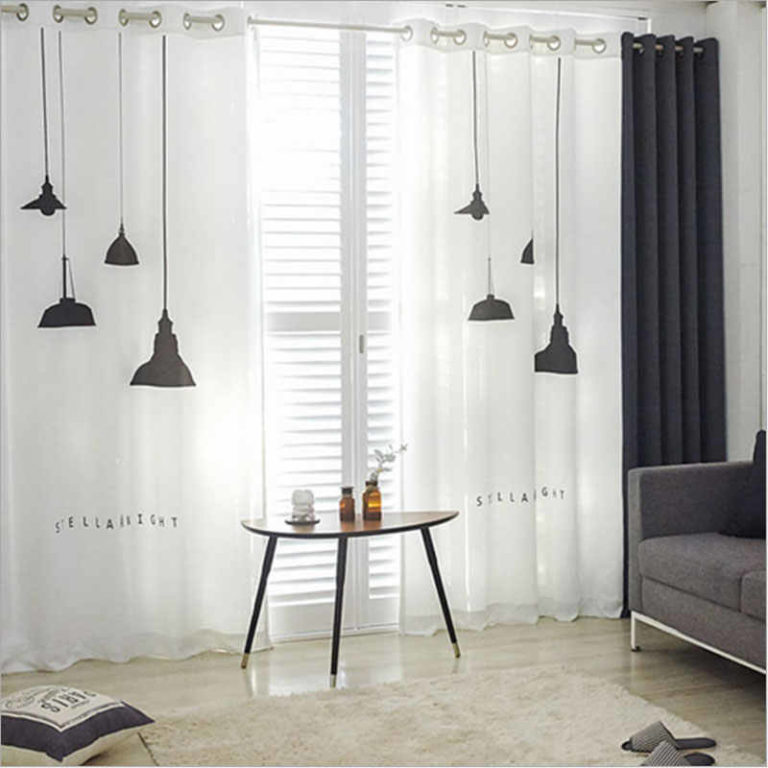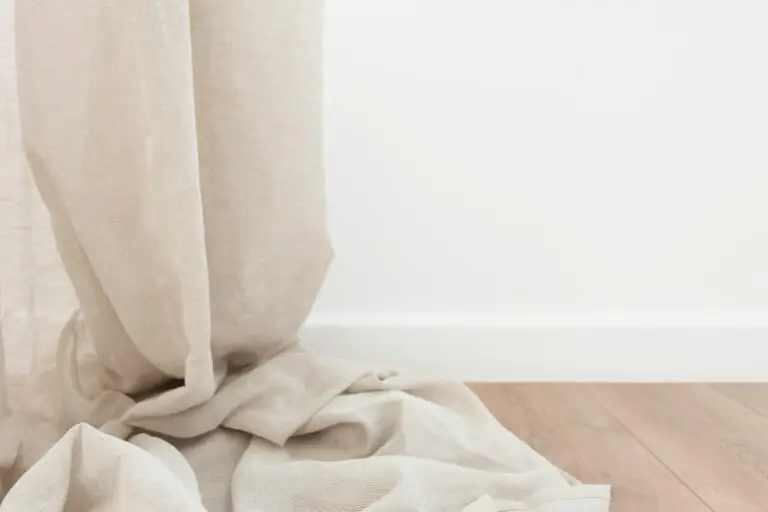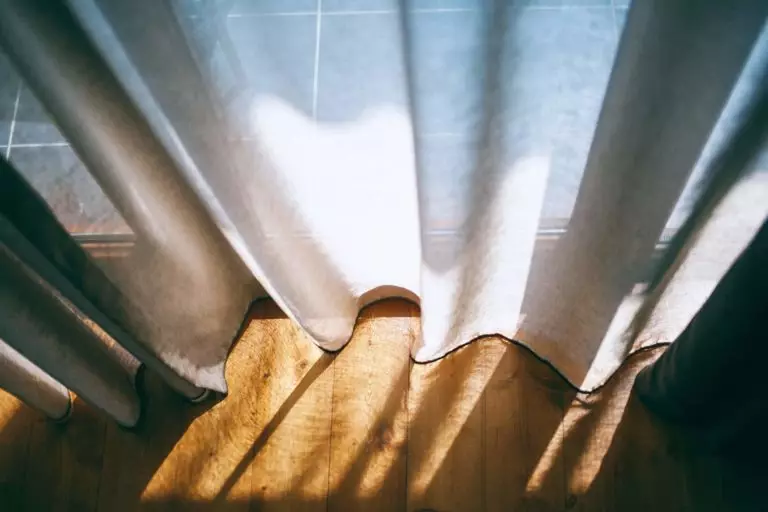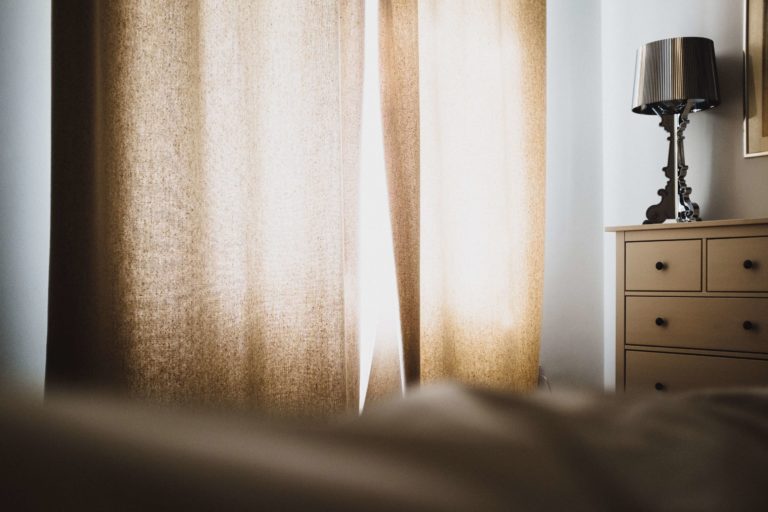Scandinavian curtains: features, types, materials, colors
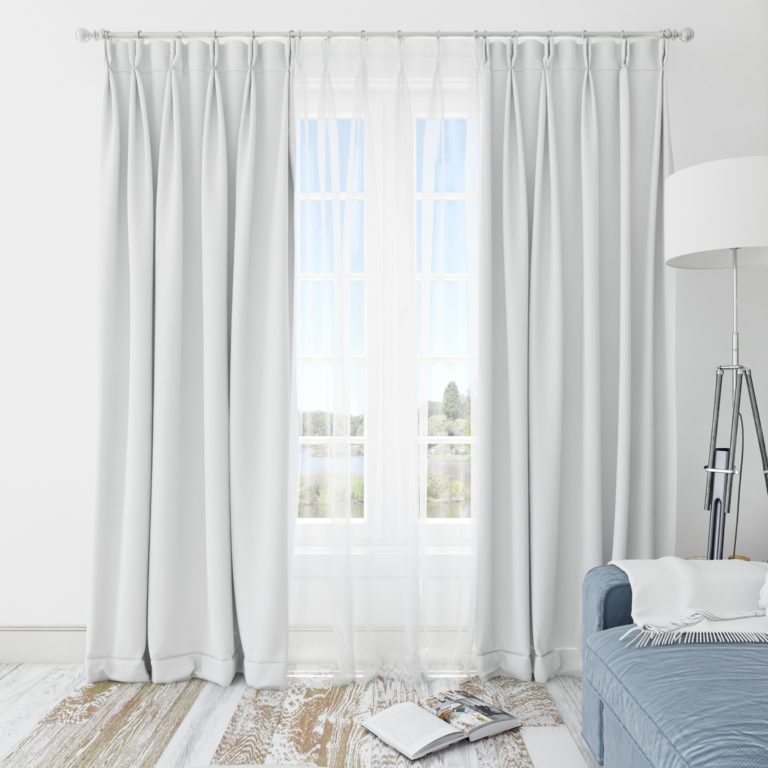
Scandinavian-style curtains create an atmosphere of comfort without overloading the interior with unnecessary details. Window textile only frames the windows and does not have a blackout effect. This is practical in the northern climate of the Scandinavian countries, where additional lighting of the living space is required. Window curtains may also be completely absent, which is in the spirit of Swedish design.
Scandinavian curtains features
For the Scandinavian interior you must choose the curtains:
Curtains in the Scandinavian style have simplicity and laconicism of cut. The predominance of light colors also characterizes them. The main trend is simplicity and comfort, so the main tasks of curtains in this style are functionality and practicality.
Natural light is significant when planning the interior of any room. This is especially true for residents of the northern hemisphere, since there are not so many bright sunny days there, and trying to catch every ray of natural light, they never choose thick heavy curtains.
Linen and cotton are most often chosen as the material for such curtains. These materials make curtains light and able to transmit part of the sunlight, creating the effect of a warm, soft, diffused daylight.
Additional decorative elements in curtains of this type are usually not used. The absence of lambrequins, frills, lace, and fringe makes curtains simple, delicate, but simultaneously stylish and modern. Even the hooks are made of the same fabric as the curtains themselves.
What types of curtains are better to use in the interior?
In Scandinavian interiors, you can use both long flowing curtains and sheer, and short blinds of a louver type. The main requirement for the textile design of window openings is restraint, simplicity, and ease of use.
Portieres
Long lined curtains, as a rule, translucent, do not prevent direct sunlight from entering the living space. Often they are used without sheer, which creates a feeling of unity with nature outside the window.
Sheer curtains
Curtains, or transparent sheer, are also found in Scandinavian interiors. They transmit light well and decorate the window.
Roman curtains
Roman curtains are used as an independent element for window decoration, and as a complement to long curtains.
Window blinds
Blinds in Swedish design are regular, as they have a brief look and support the aesthetics of minimalism in the interior.
Scandinavian curtains accessories
Since simplicity is a priority in the Swedish interior, all kinds of accessories and colorful décor are not used here. If necessary (very rarely), they use hooks sewn from the same fabric as the curtains or made of rope or a cord.
Simplicity, elegance, lightness, a lot of light and air, every detail is not superfluous and has its purpose. The Nordic setting is suitable for those who value warmth and comfort without frills, for those who value spiritual rather than material family values. If you want to live in a house whose atmosphere is filled with tranquility and serenity, feel free to choose the Scandinavian style and remember that curtains play an essential role in it.
Fabric types for Scandinavian curtains
As materials for curtains, natural fabrics are used. It is practical, aesthetically pleasing, and concise, which is most consistent with the Swedish approach to interior design. The following materials are used in sewing curtains:
Scandinavian curtains color spectrum
Scandinavian-style curtains should either dissolve in the general color scheme or create an accent in the interior. If it is a soft, muted color palette, pastel colors, then the curtains are suitable for the most delicate, light shades. If the interior is made up of contrasts, then you can use curtains with geometric ornaments inherent in this particular style, for example, a zigzag, strip, or repeating pattern.
The most acceptable colors for curtains:
Scandinavian cornice recommendations
In Scandinavian interiors, the simplest and most concise cornices are used, usually single.
According to the type of mounting, they differ:
Scandinavian curtains in different rooms
There are many options for window design, depending on the purpose of the room.
Scandinavian curtains in the kitchen
Scandinavian-style kitchen curtains maximize the view outside the window and let the light into the room. This creates the necessary comfort for cooking and eating. Curtains can be long if space permits. In small kitchens, practical short, roll, or Roman curtains are used.
Scandinavian curtains in the living room or lounge
The Swedish style living room curtains bring comfort to the home and help you relax in the family circle.
Scandinavian curtains in the bedroom
The curtains for the Scandinavian bedroom create a sense of security but do not overload the room.
Scandinavian curtains in the children’s room
The world of a children’s room should be individual and special. In Swedish design, striking details are not only children’s toys, books, decor, but also curtains.
Scandinavian curtains in the loggia or balcony
According to the Scandinavians, curtains on the loggia or balcony should not obscure the beautiful scenery outside the window.
Scandinavian curtains – Photo gallery
When choosing curtains in the Scandinavian style, you must remember that aesthetics are simplicity and naturalness.
